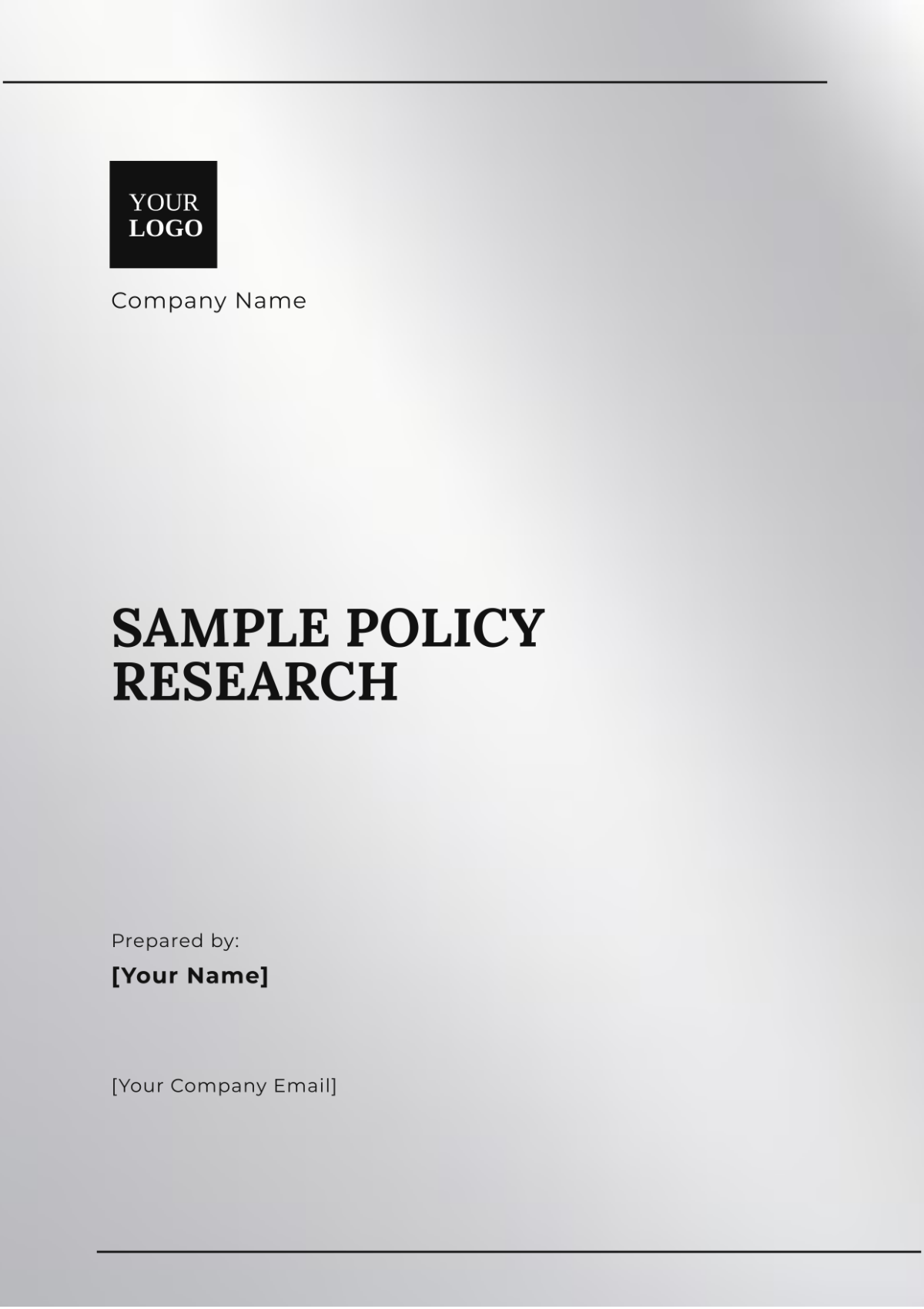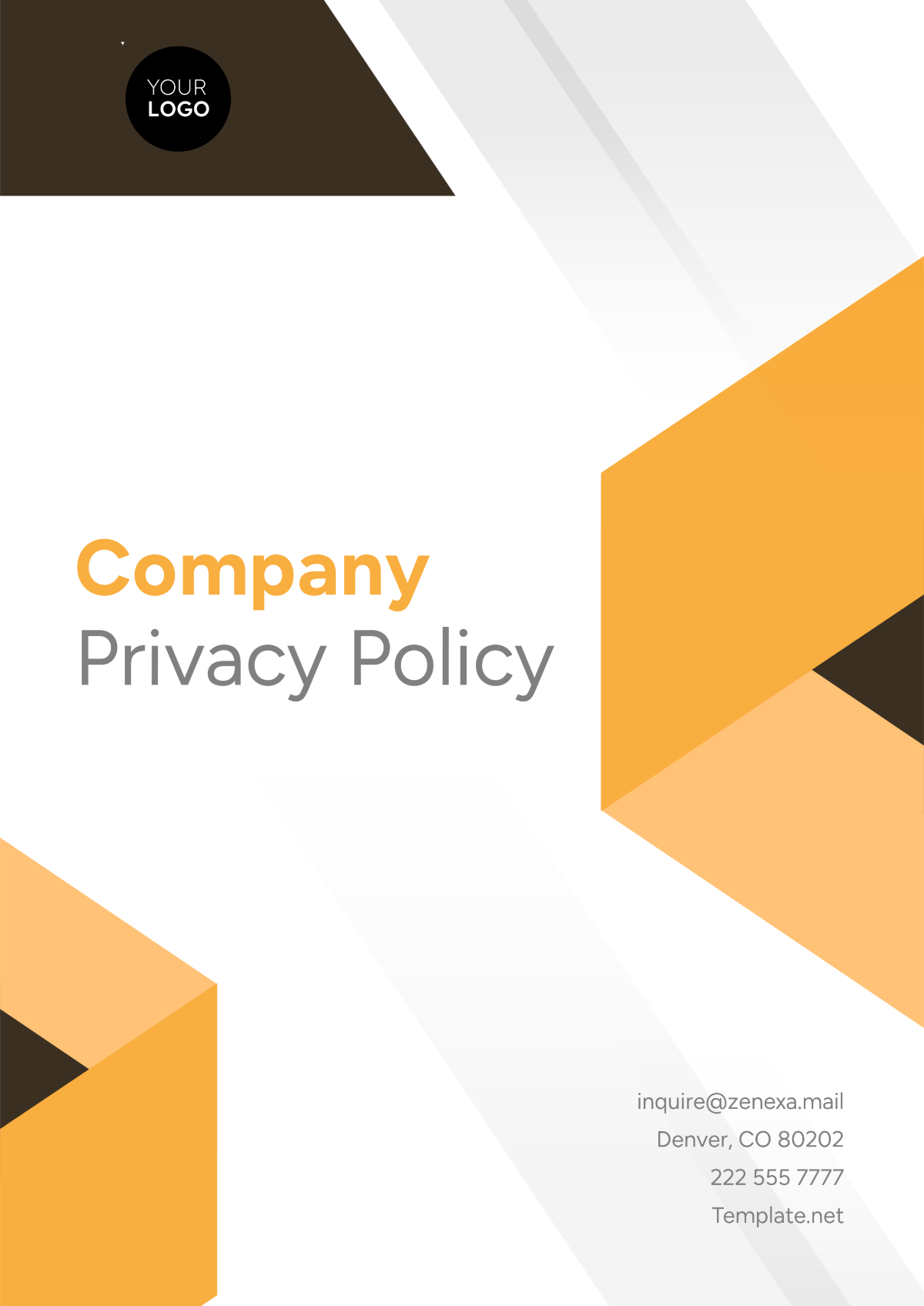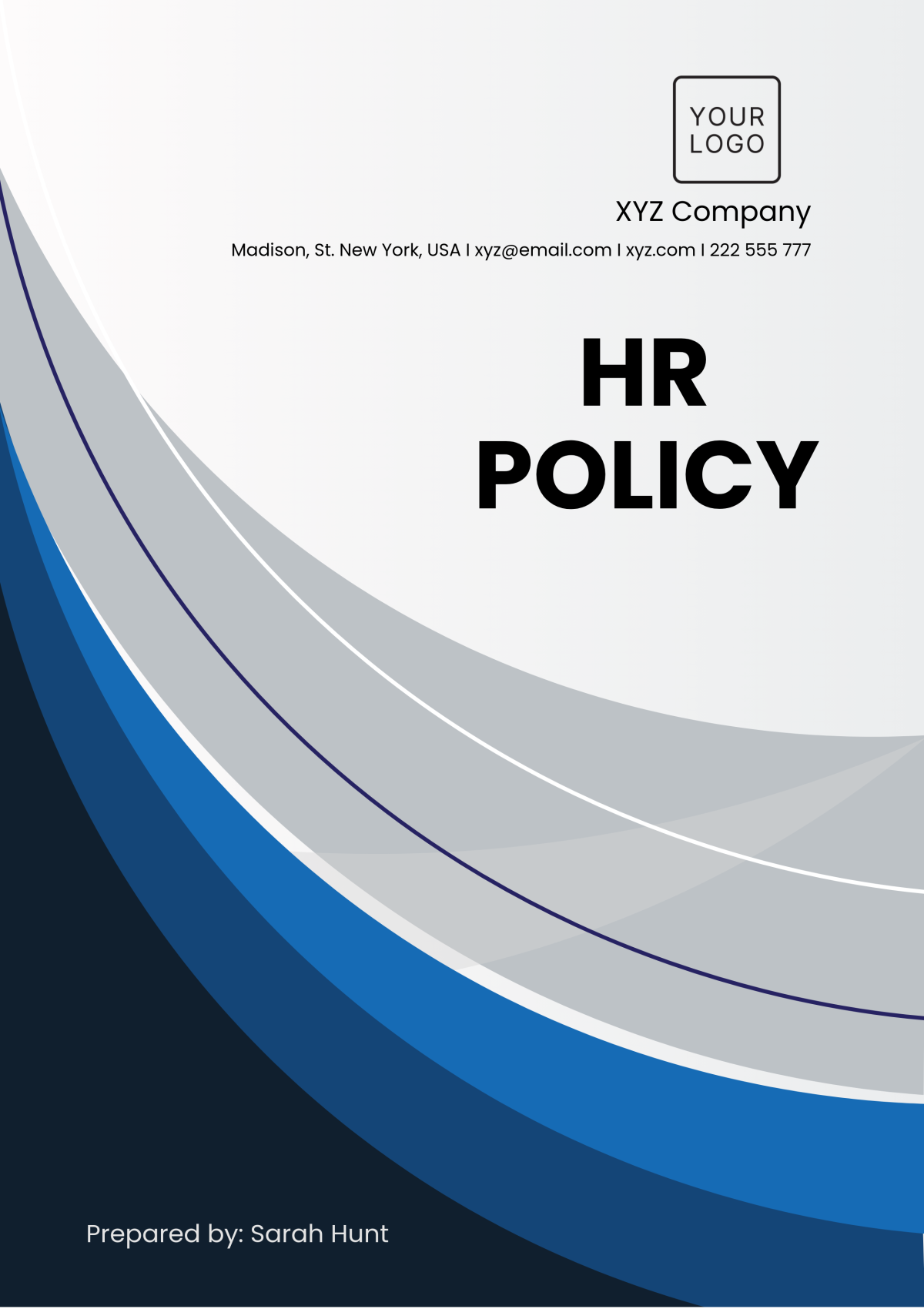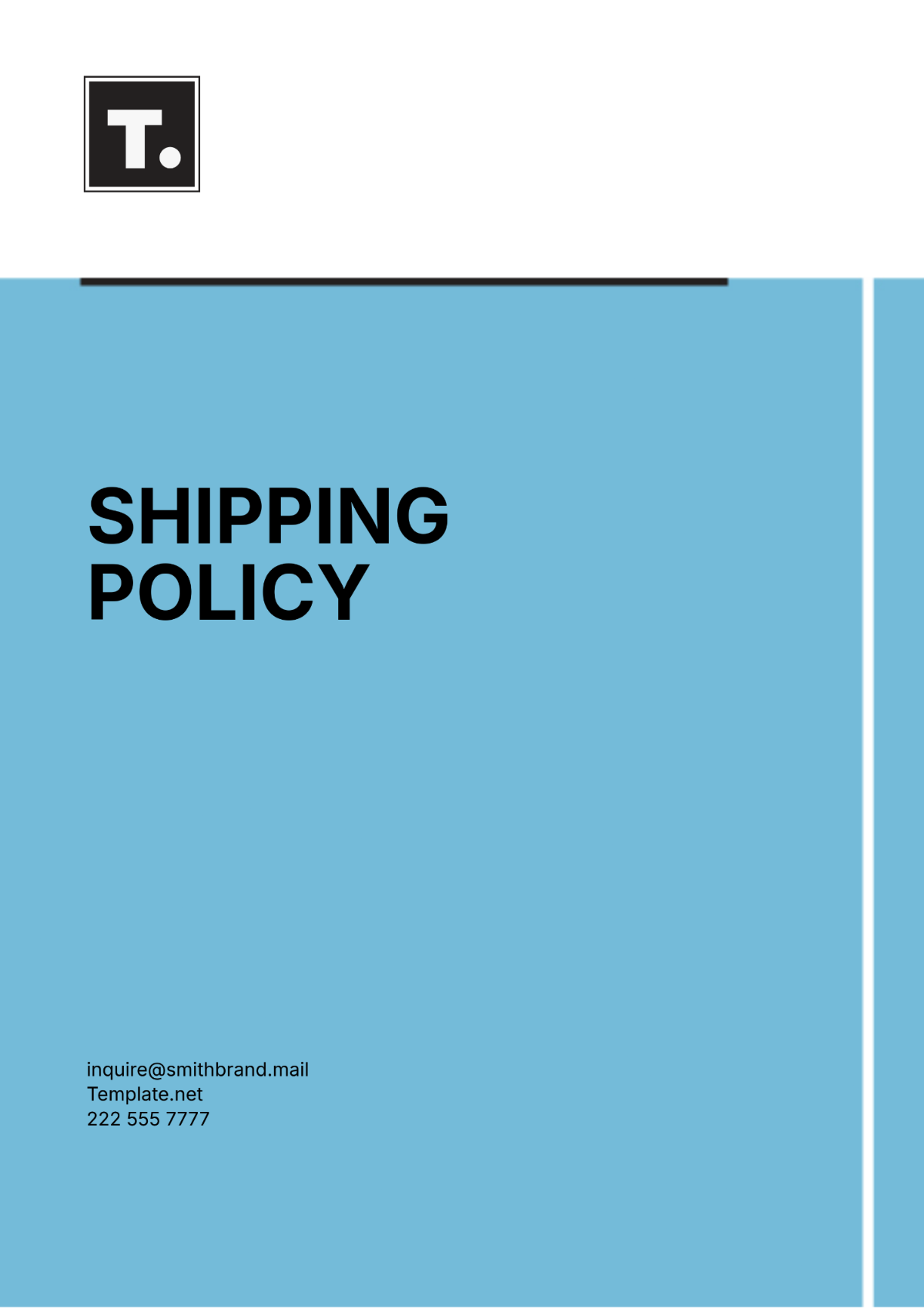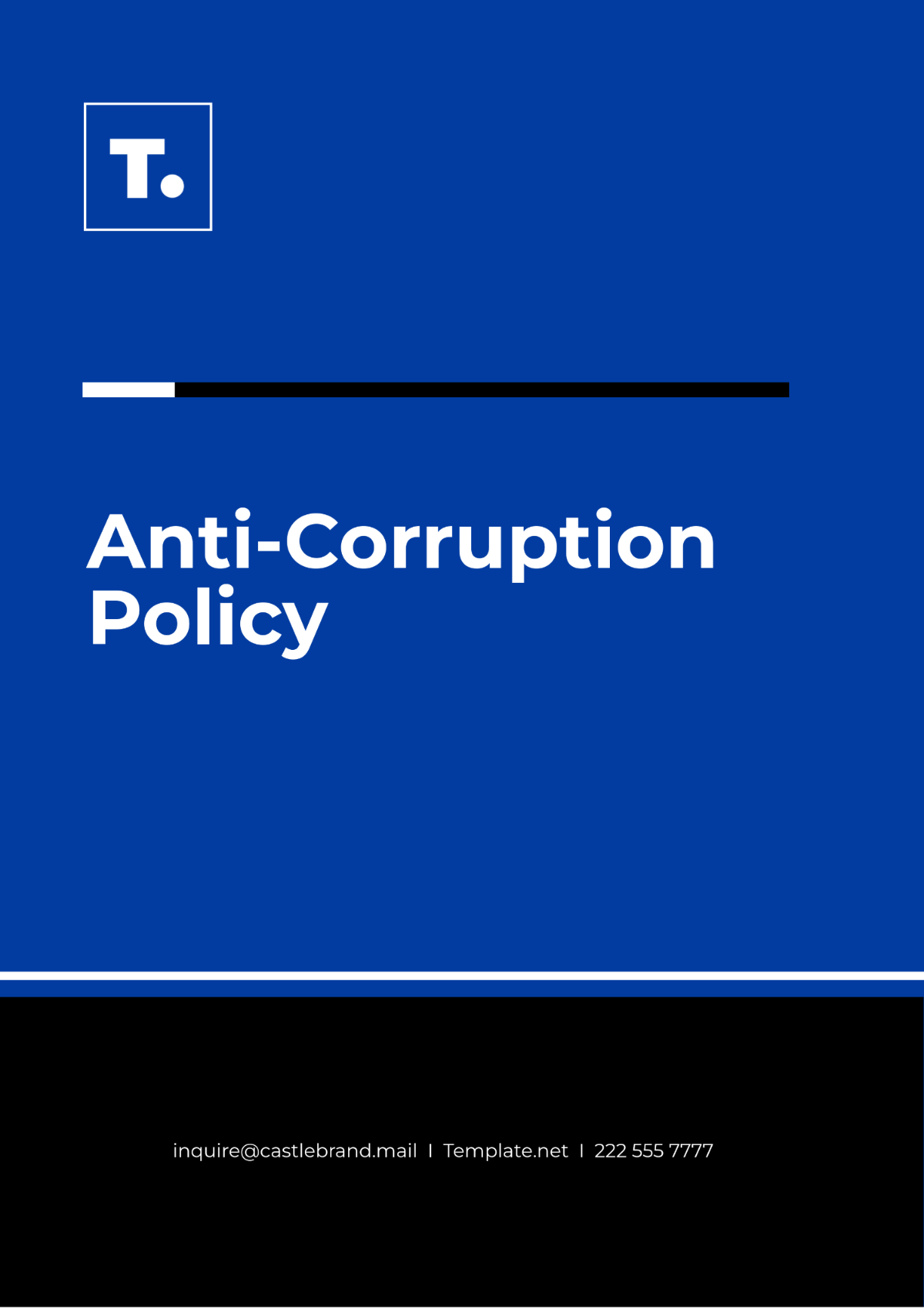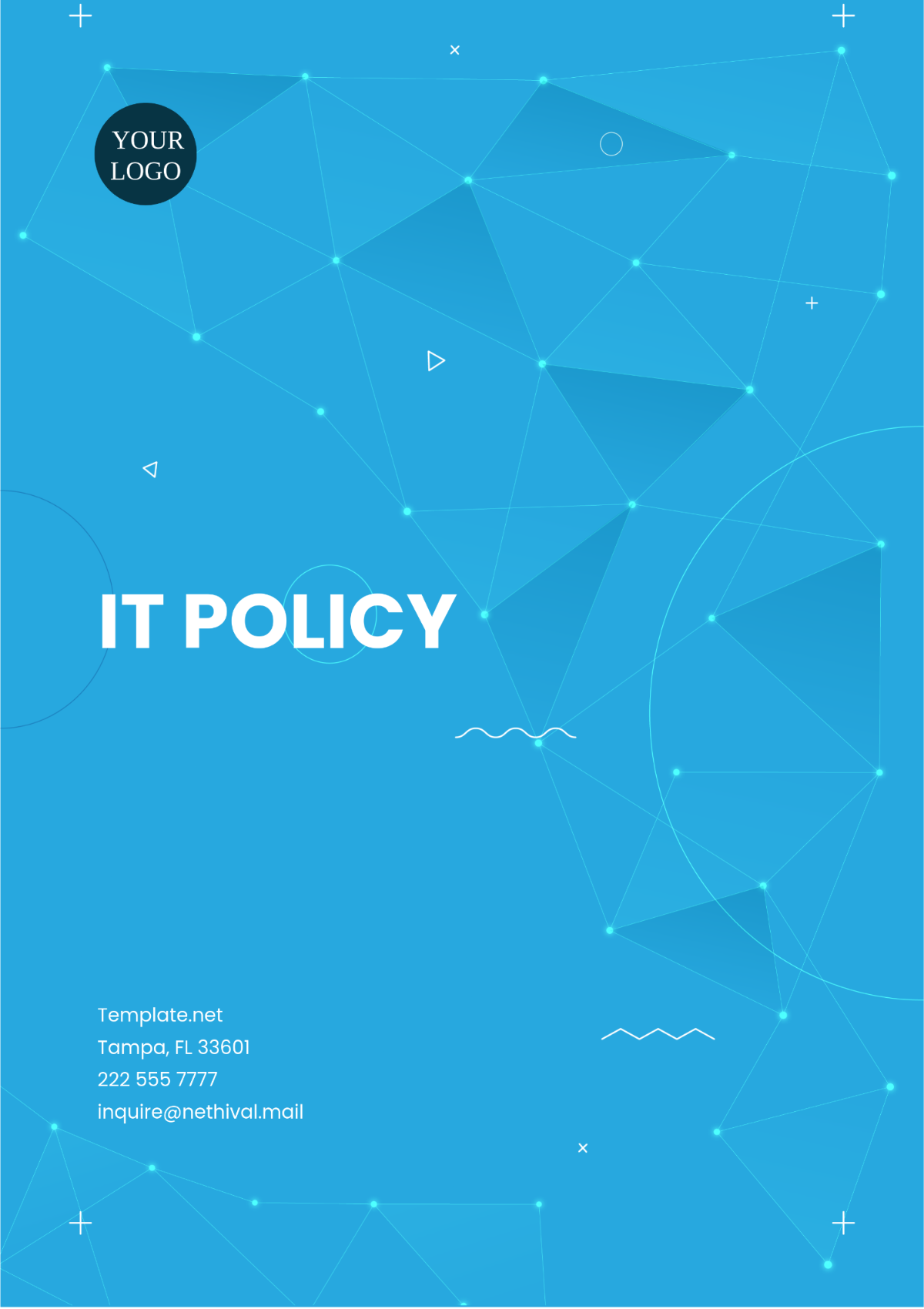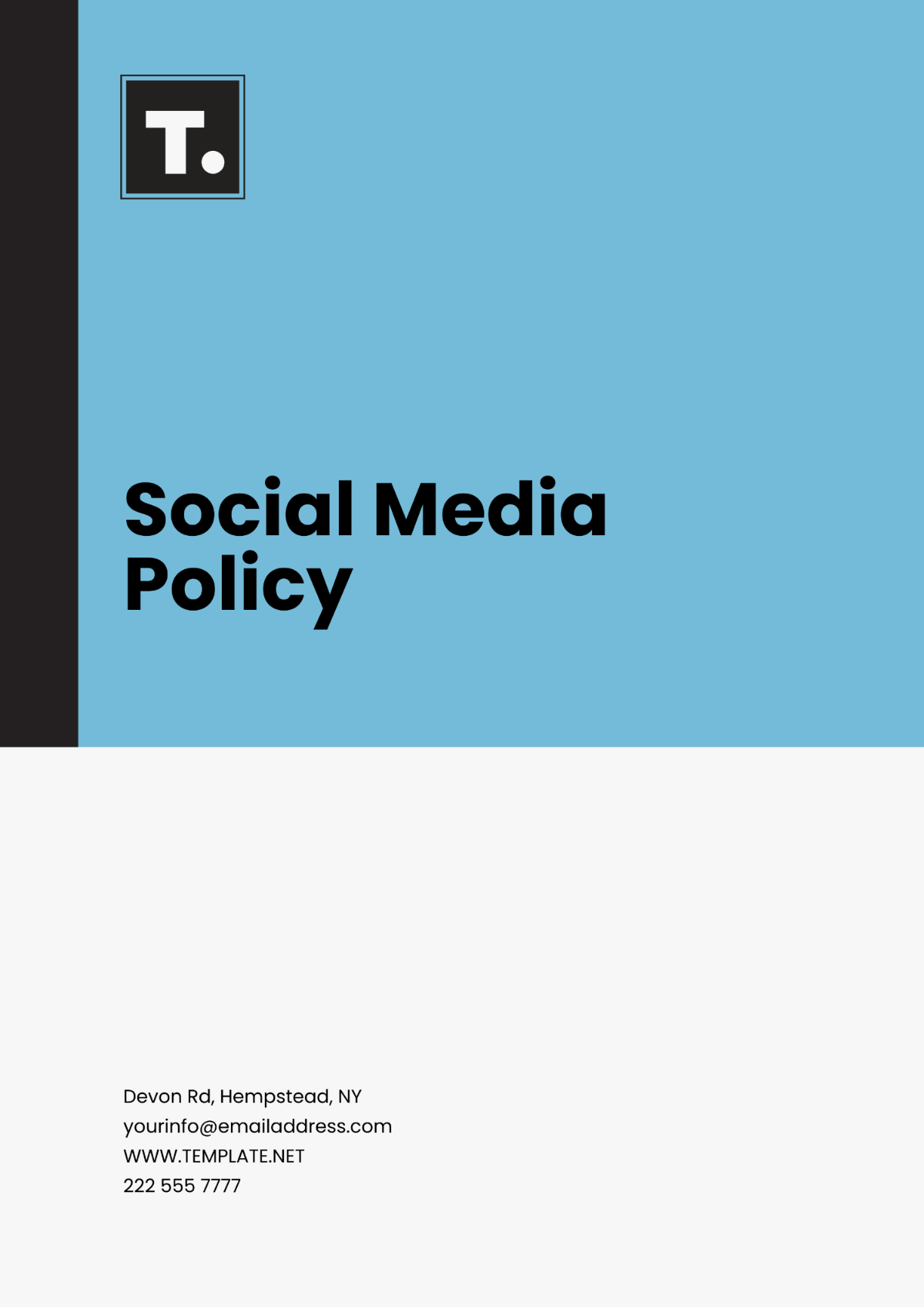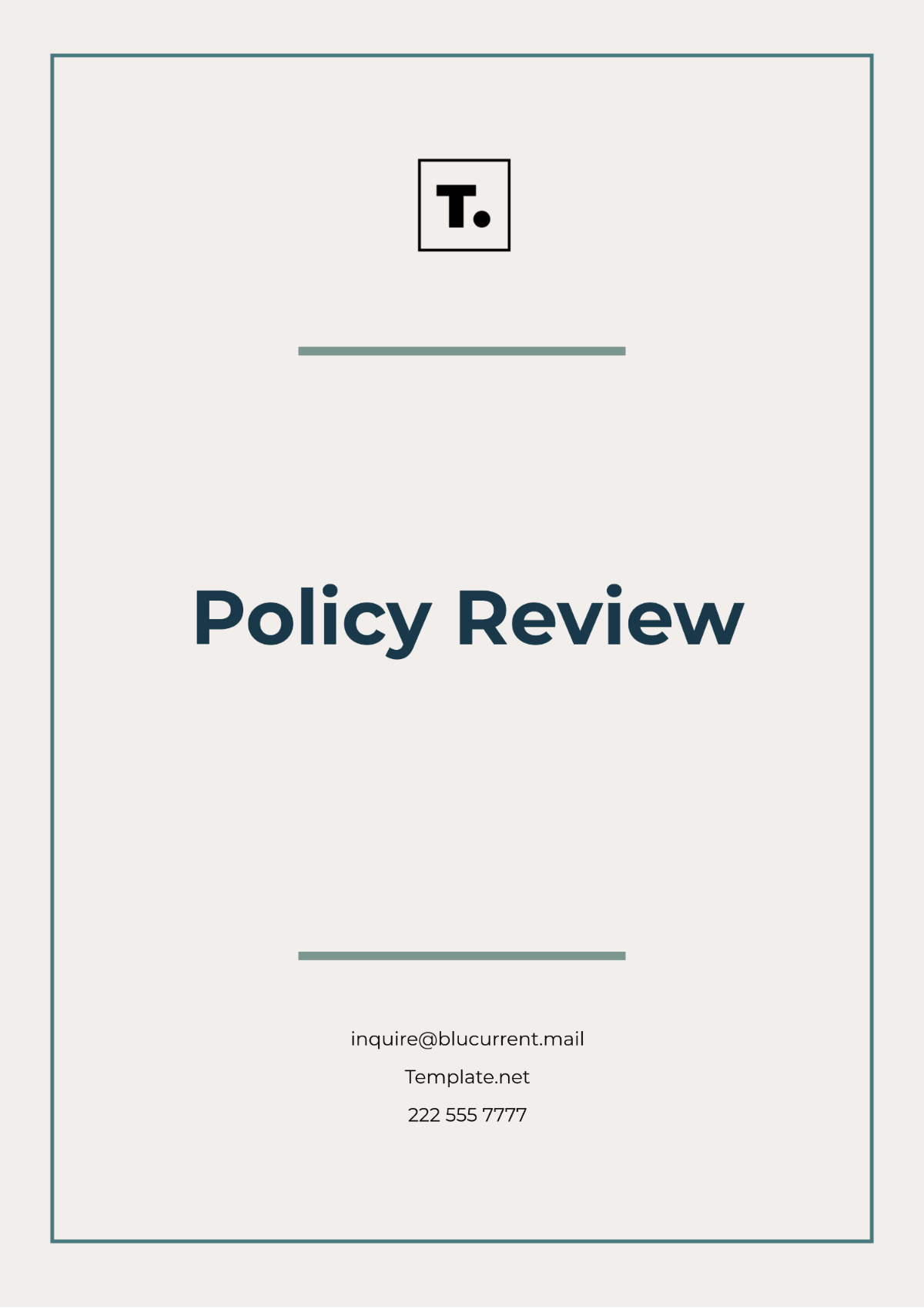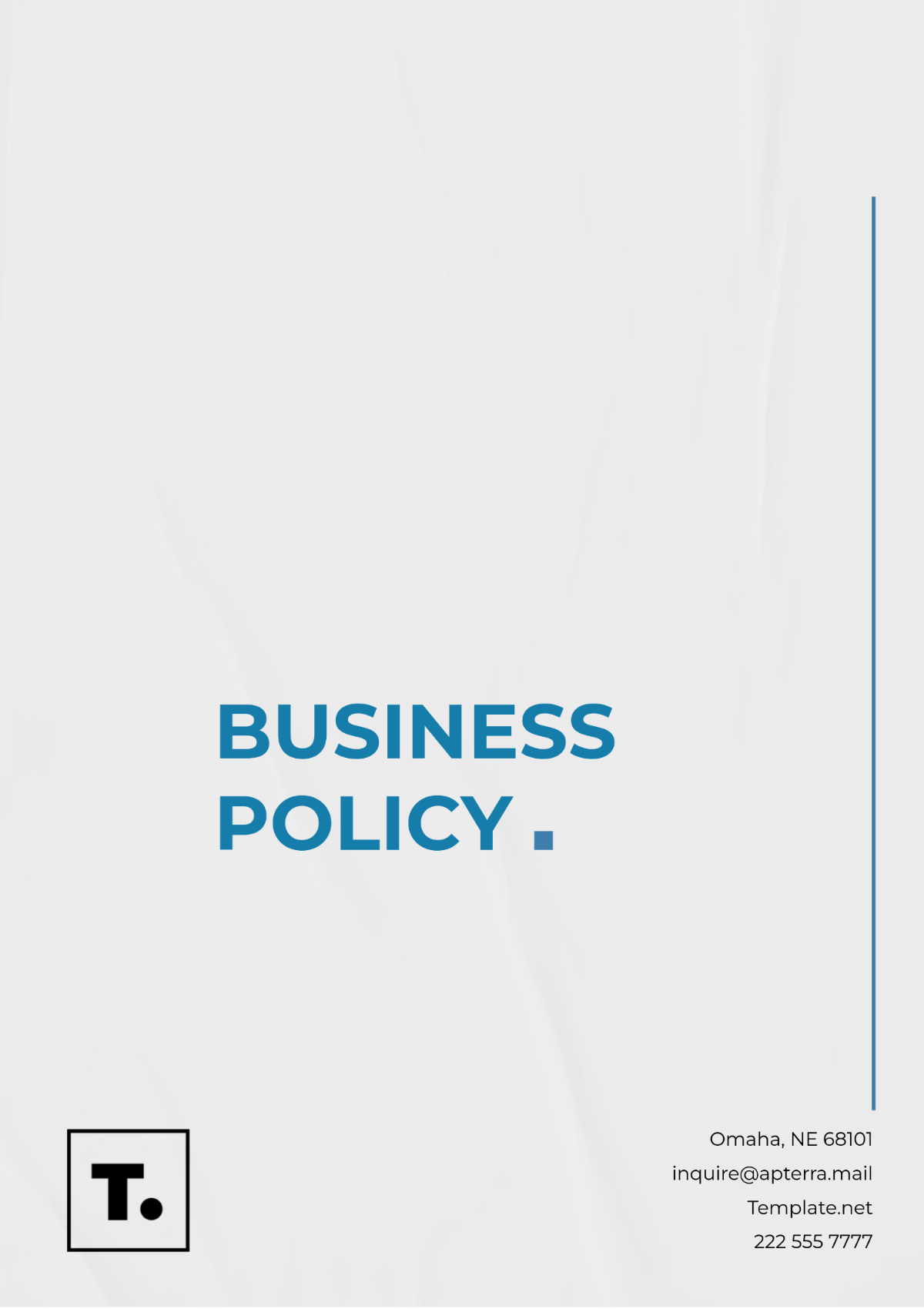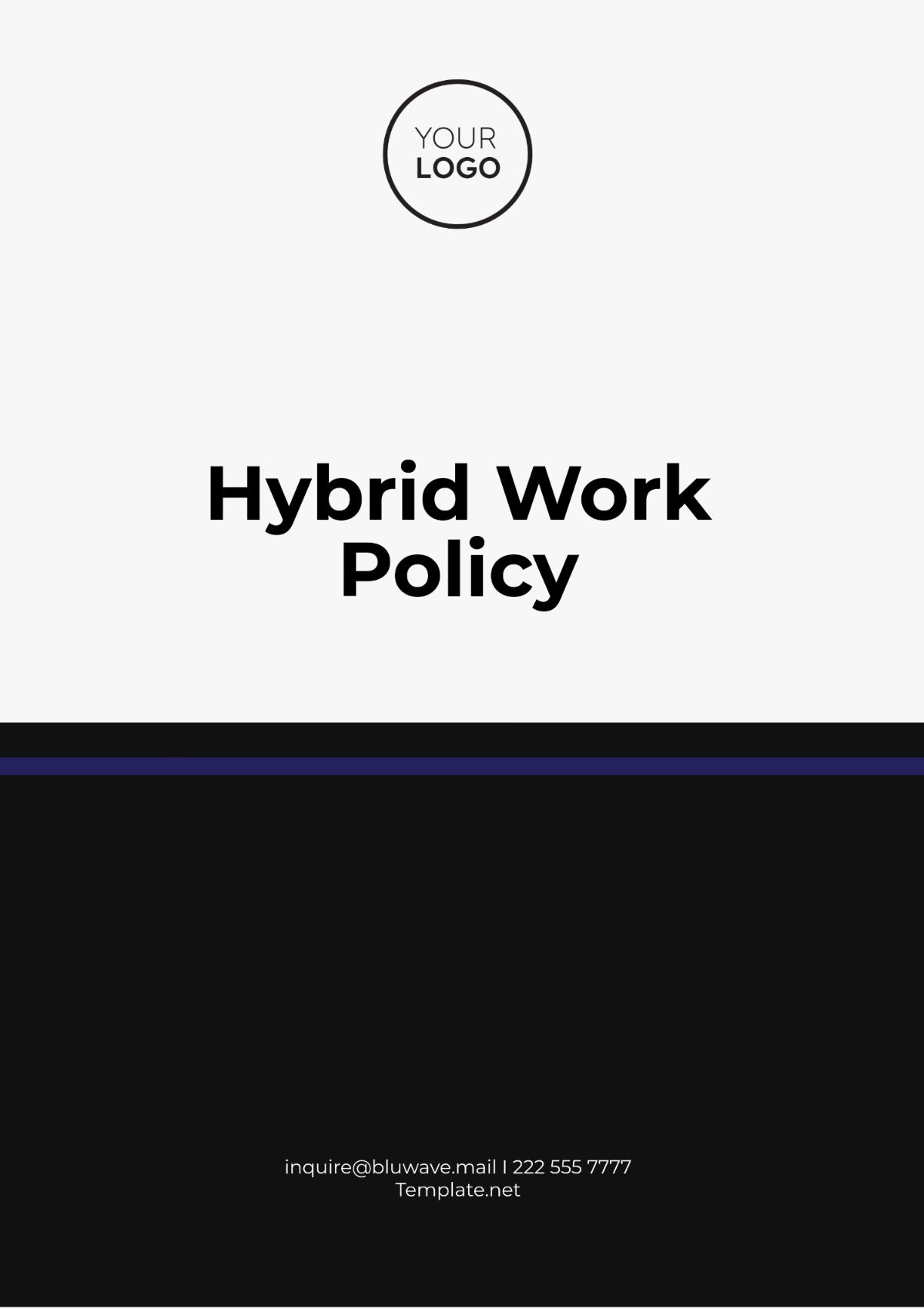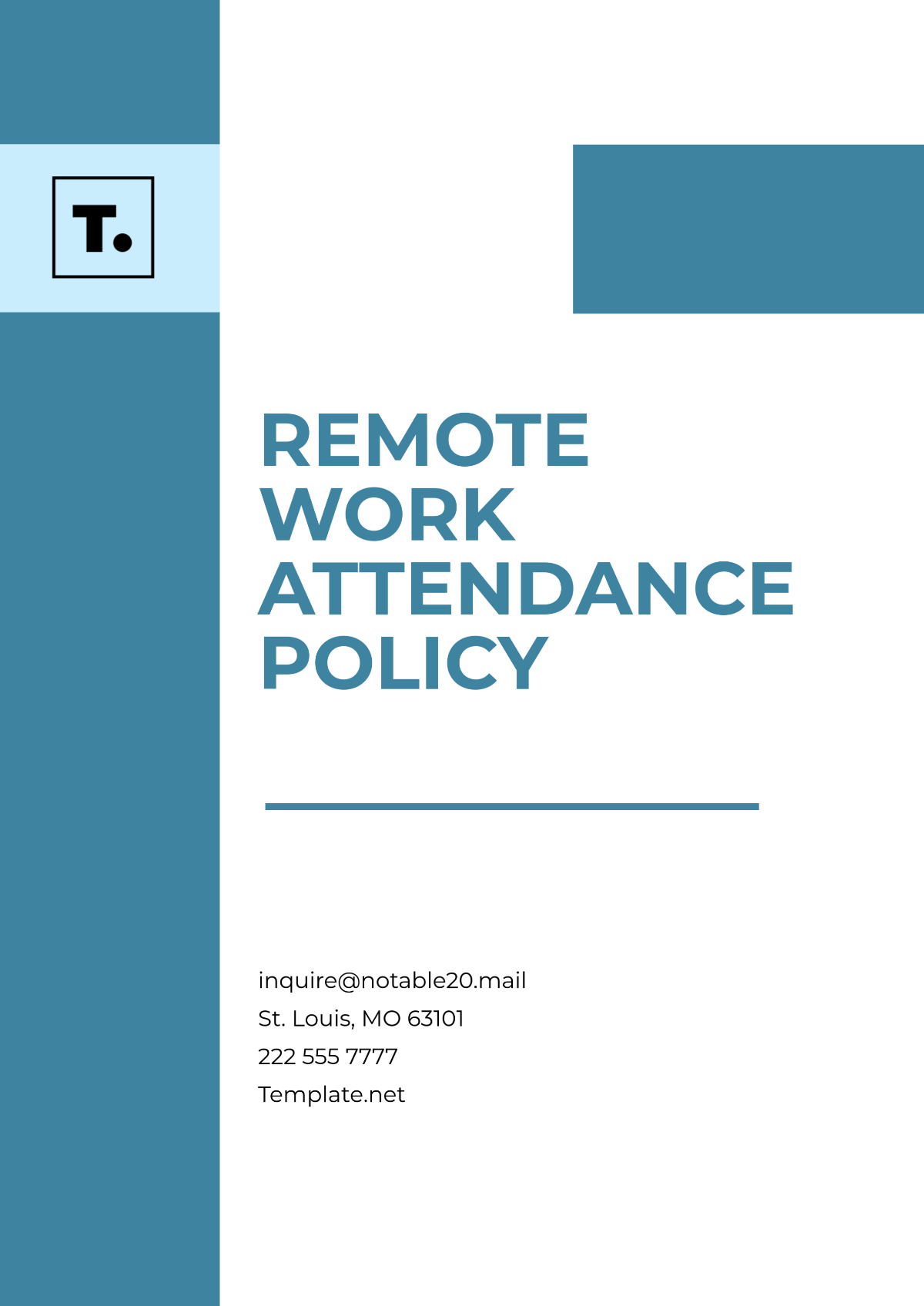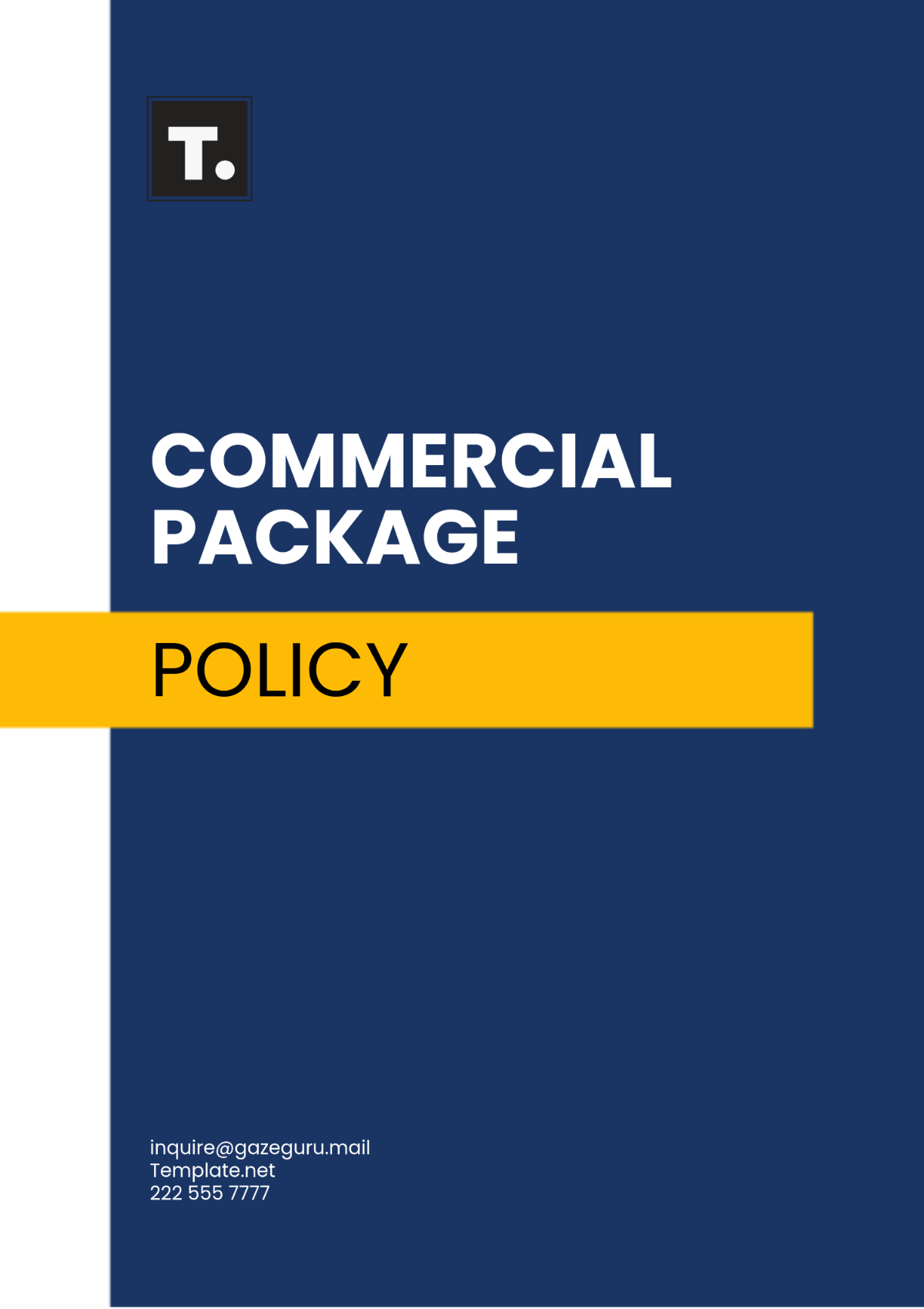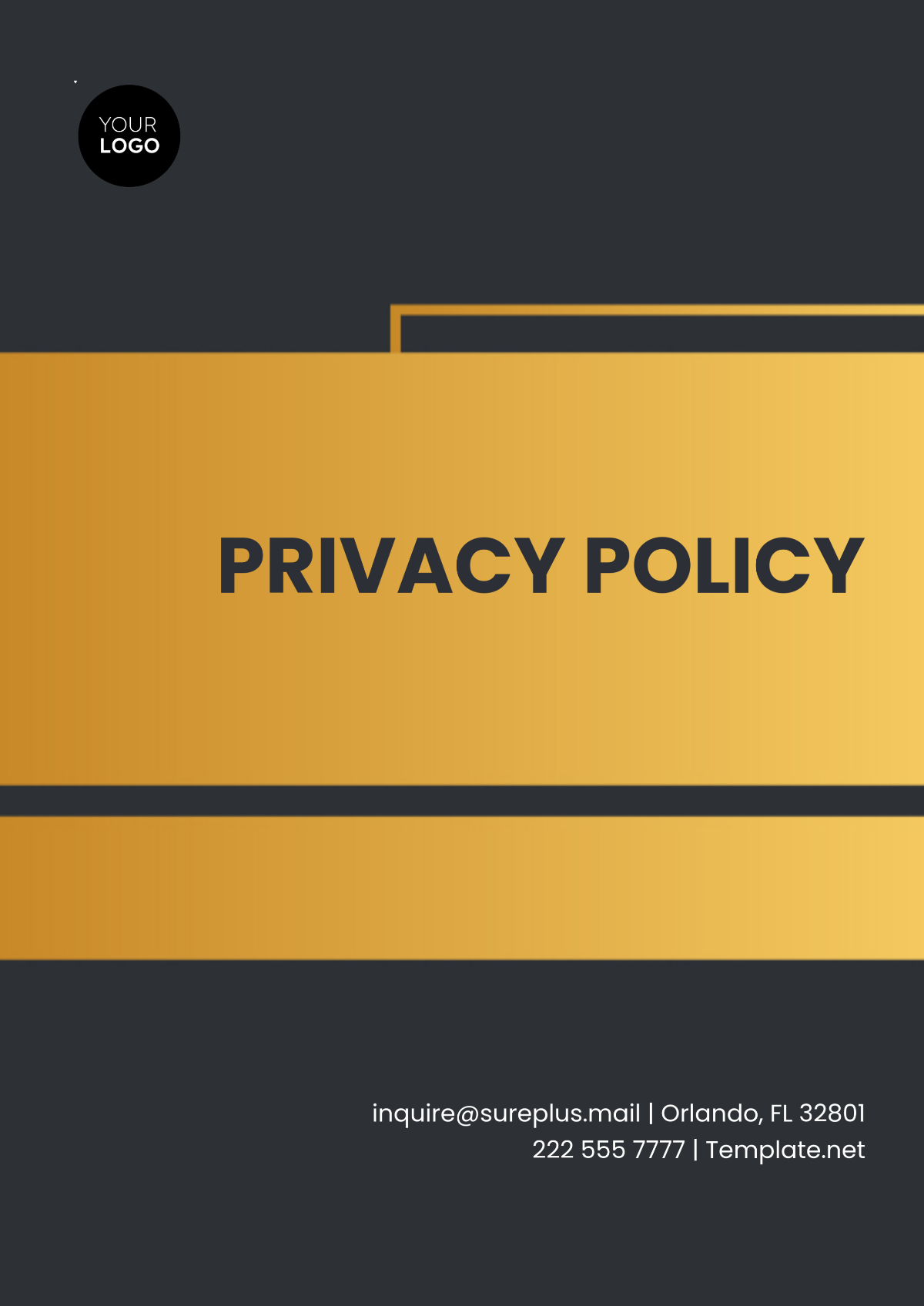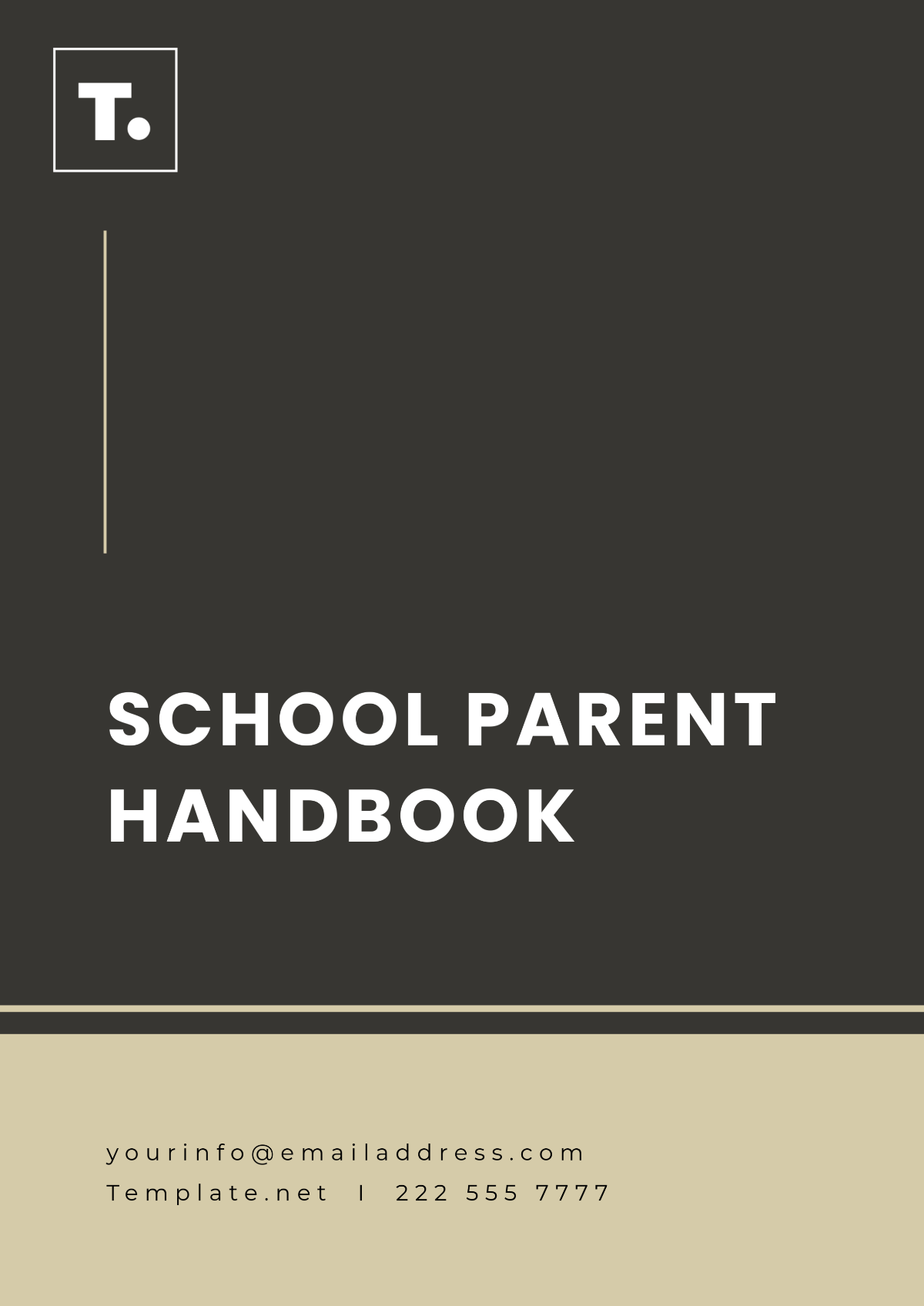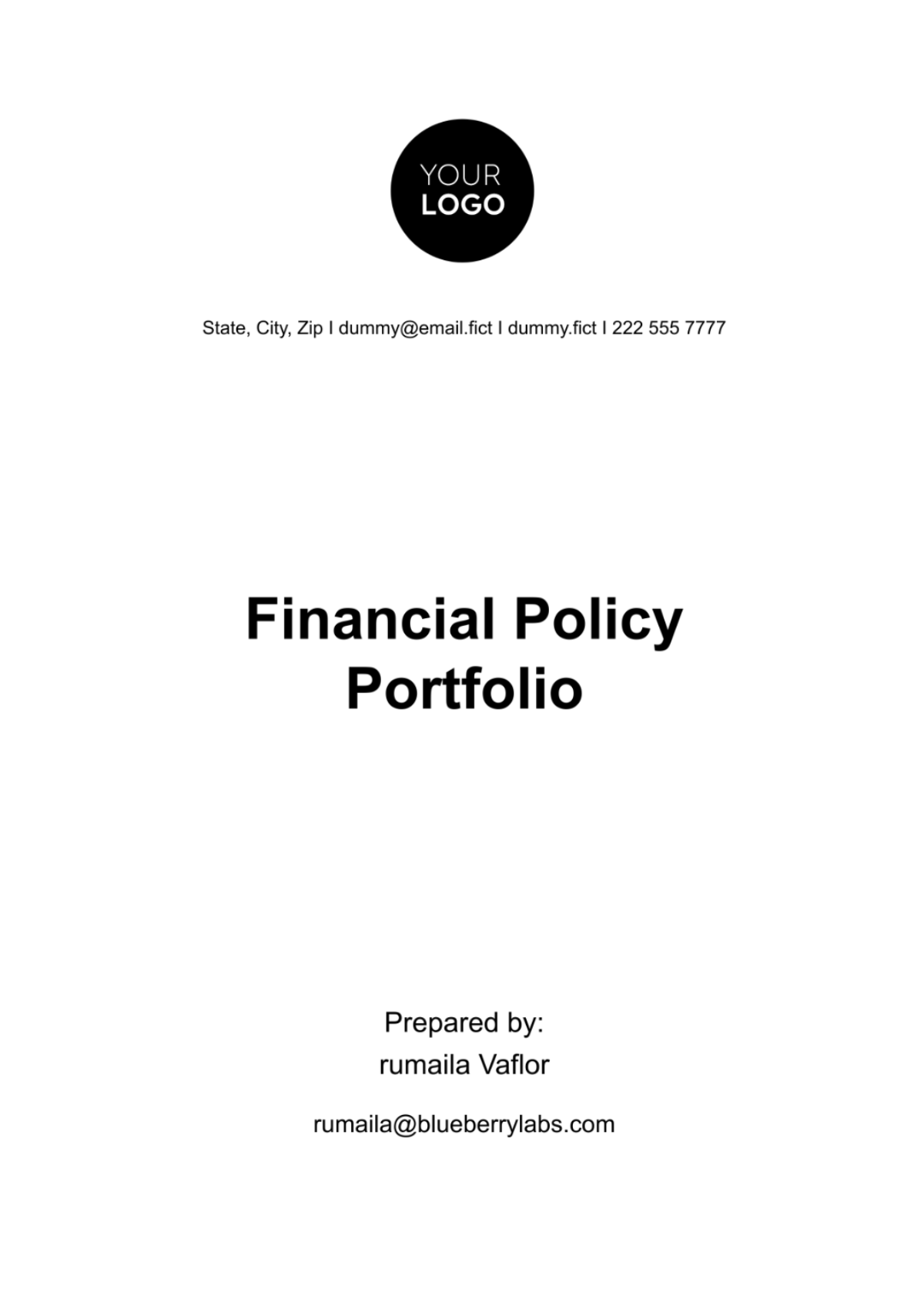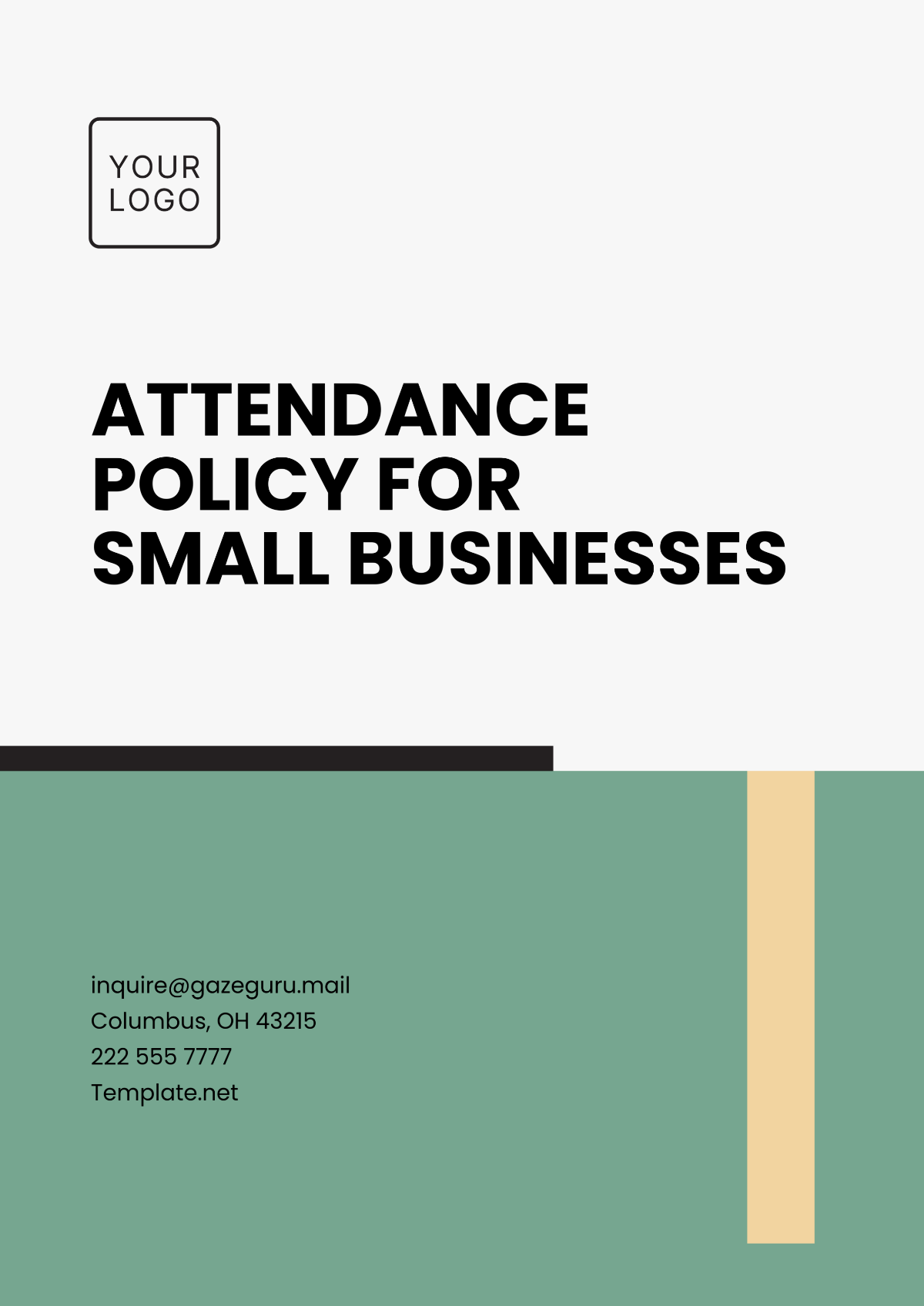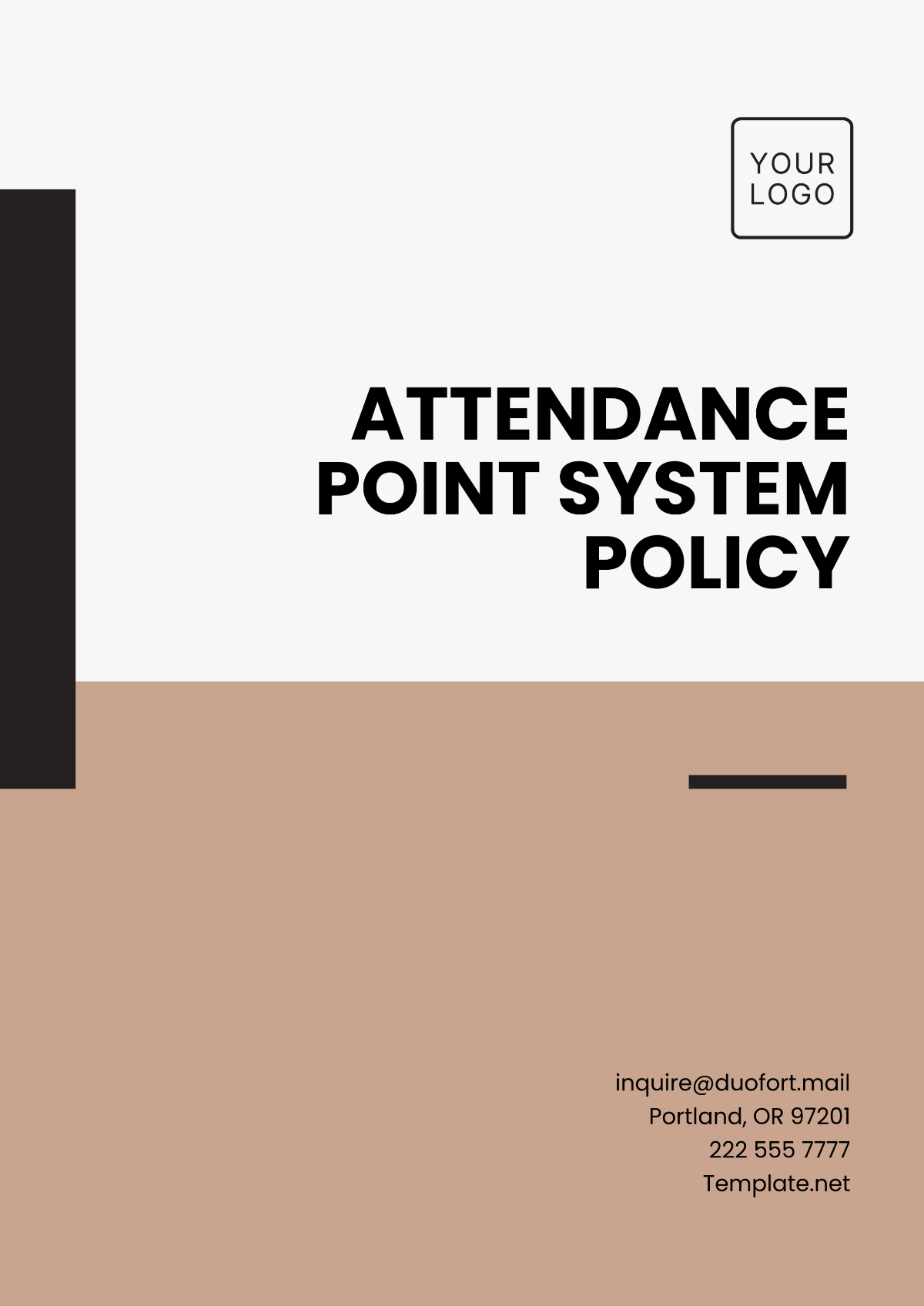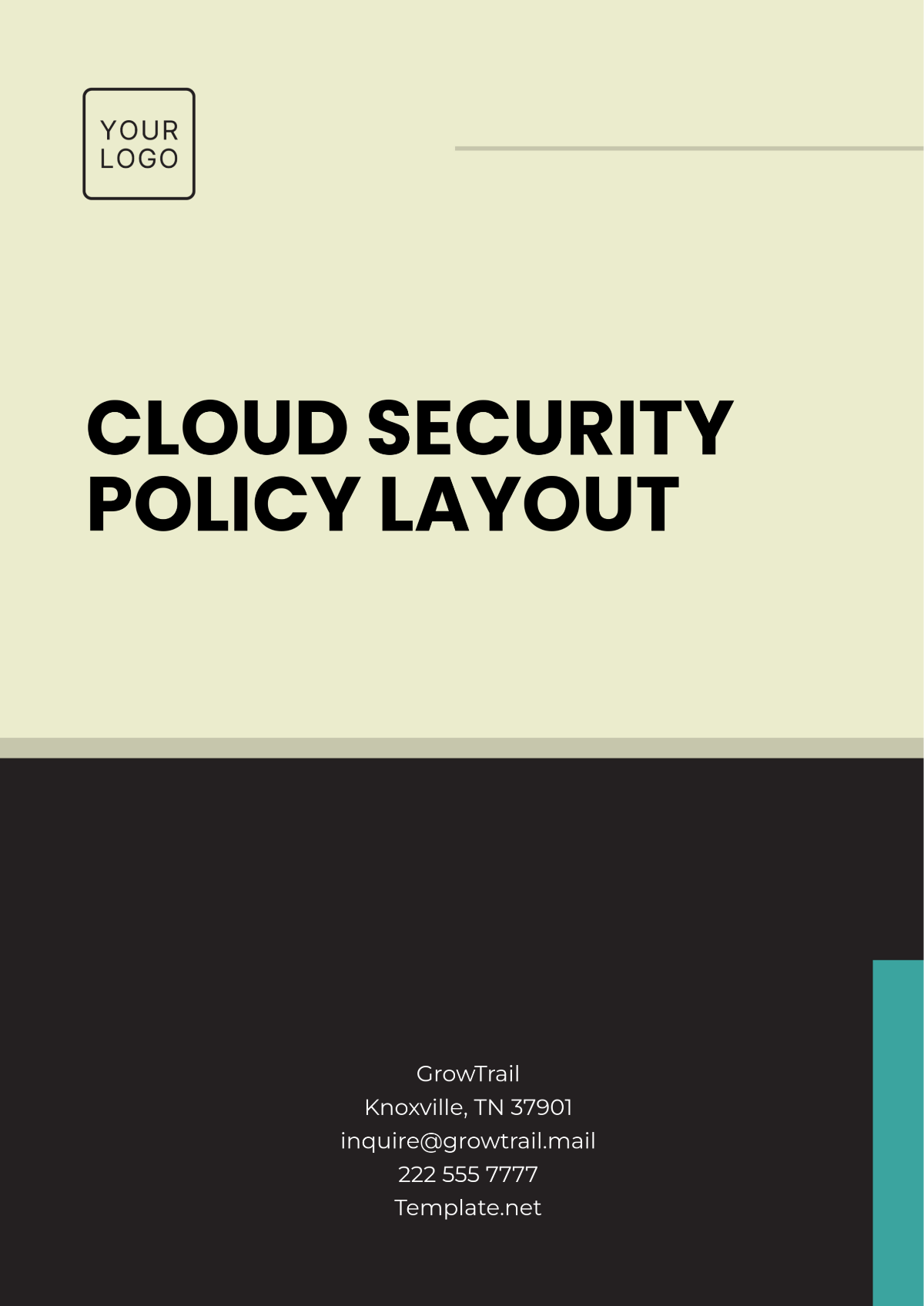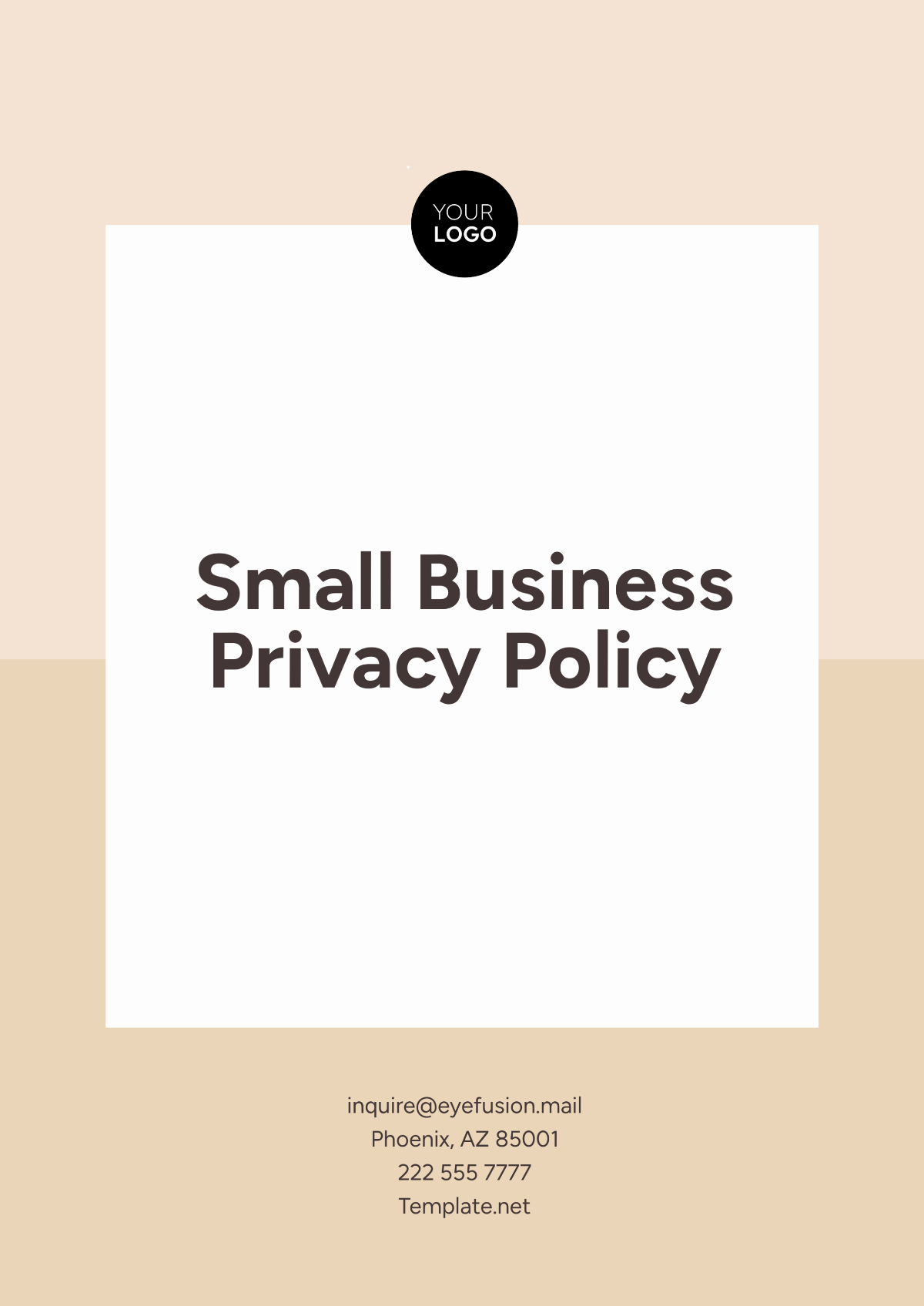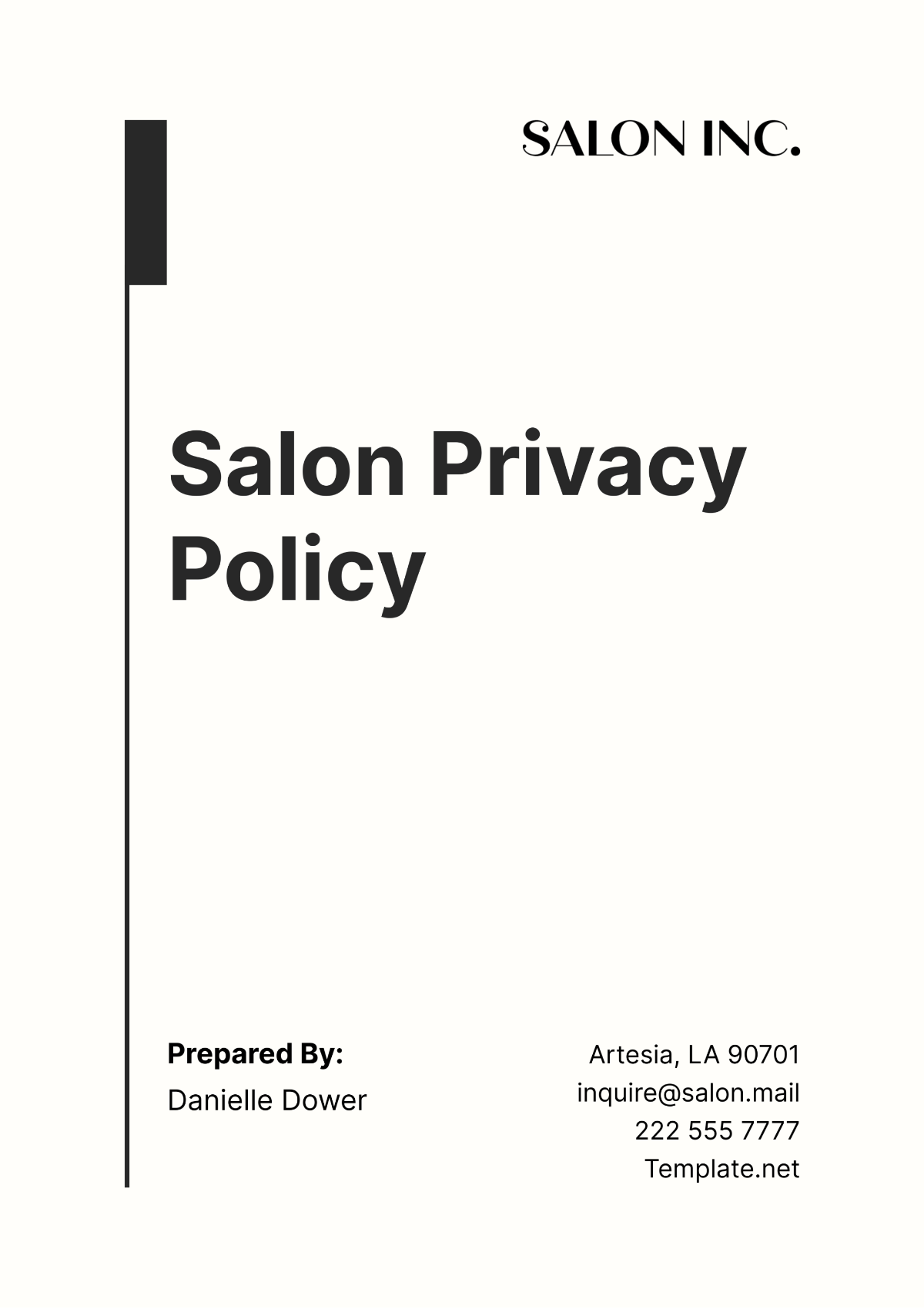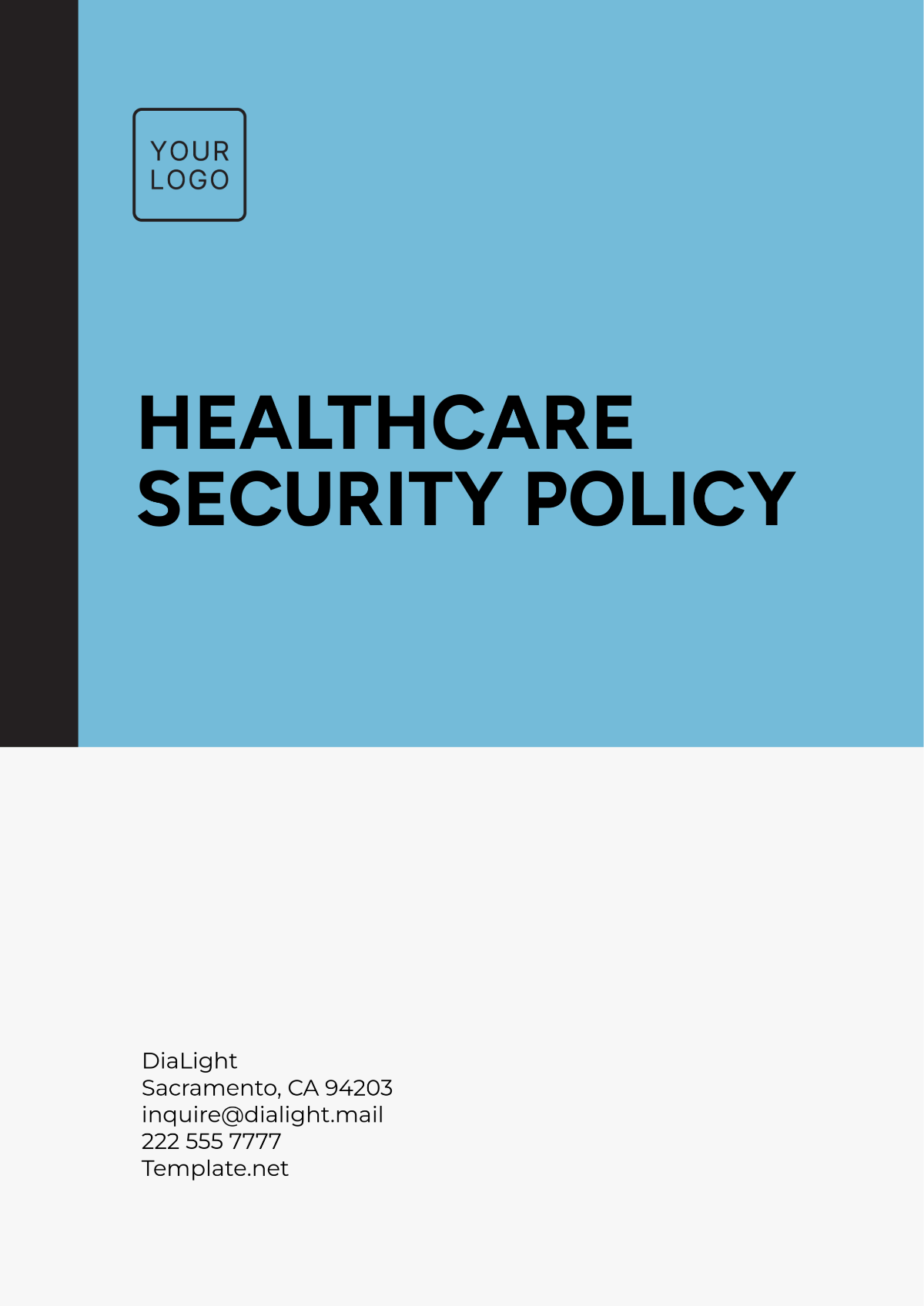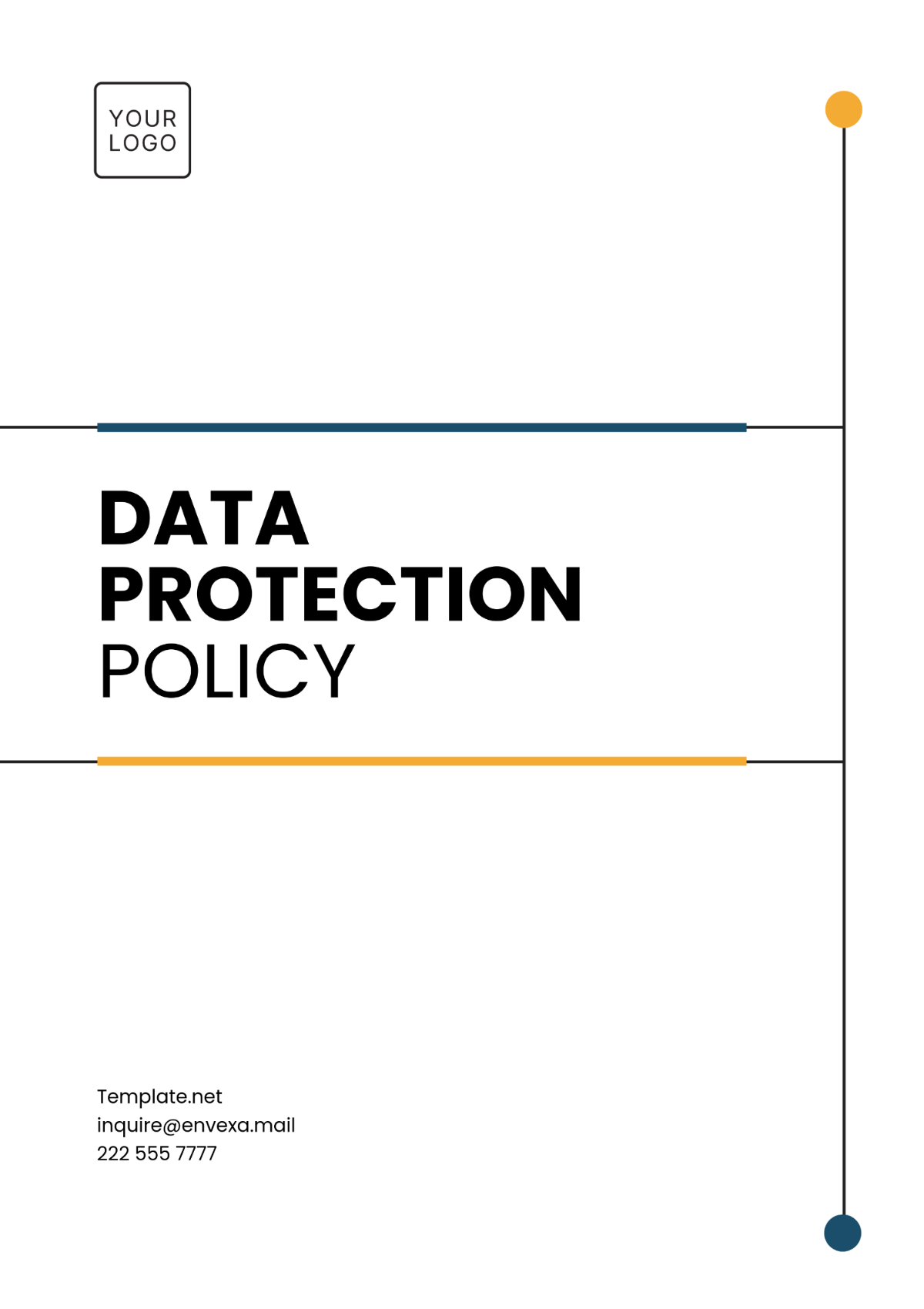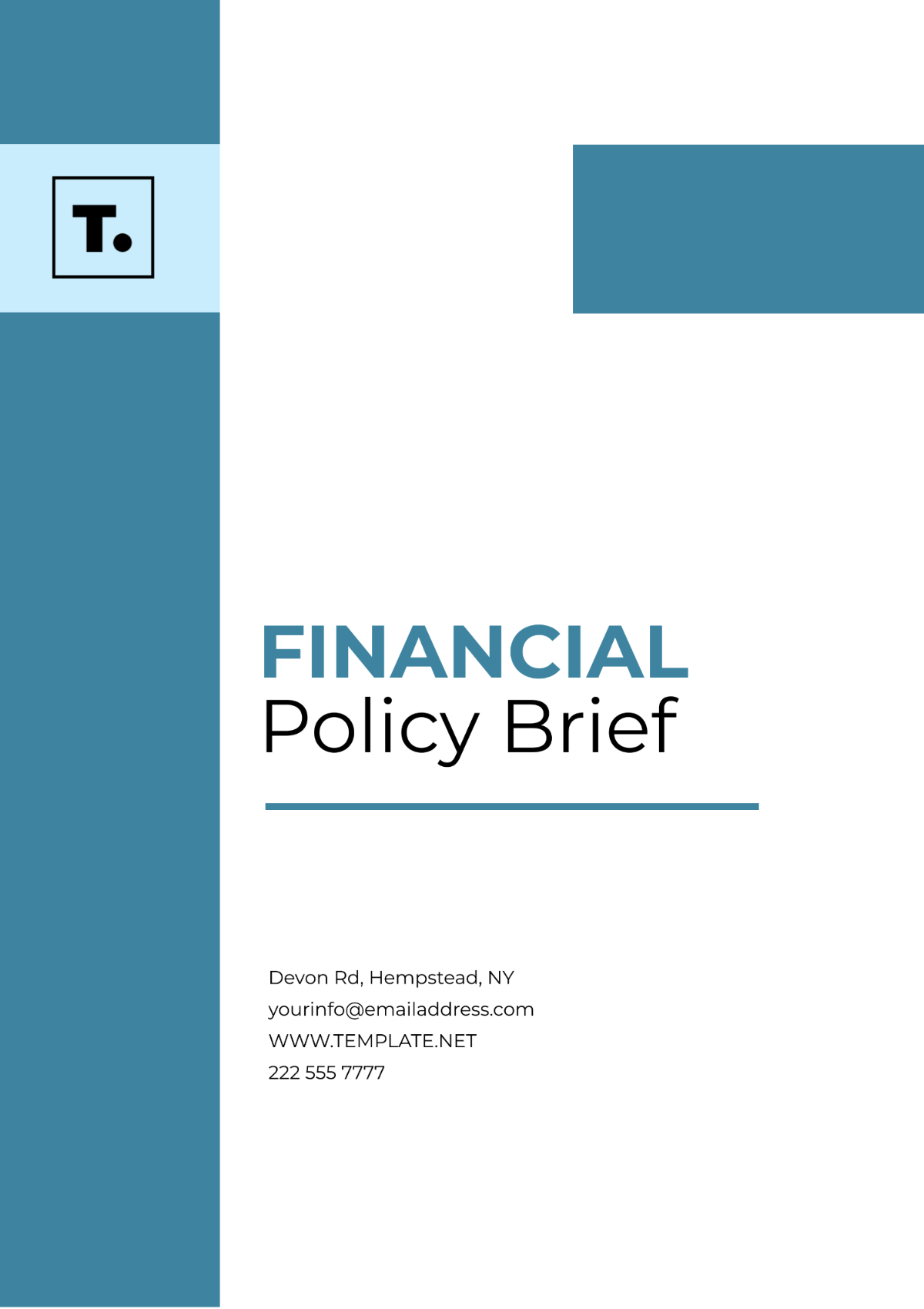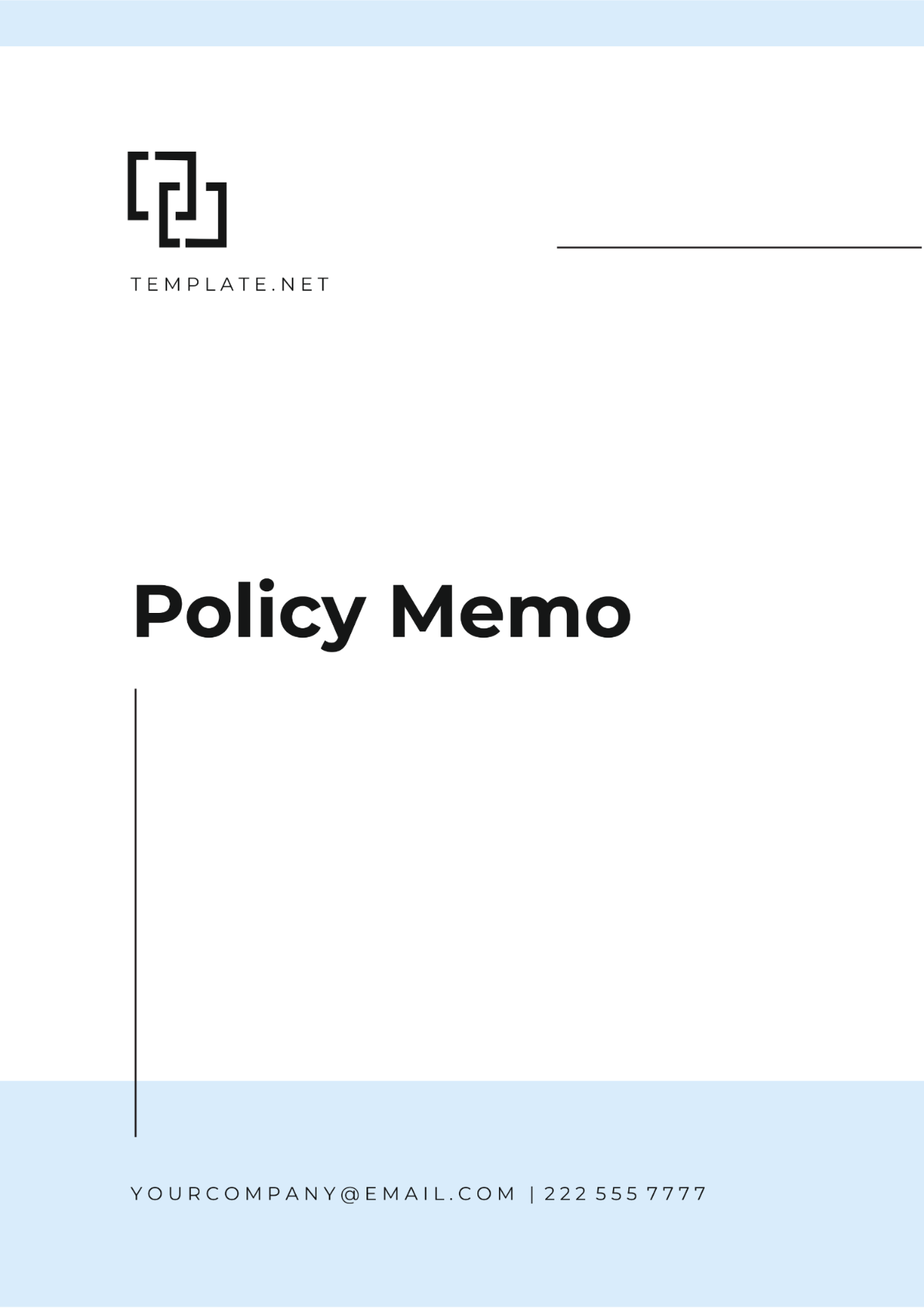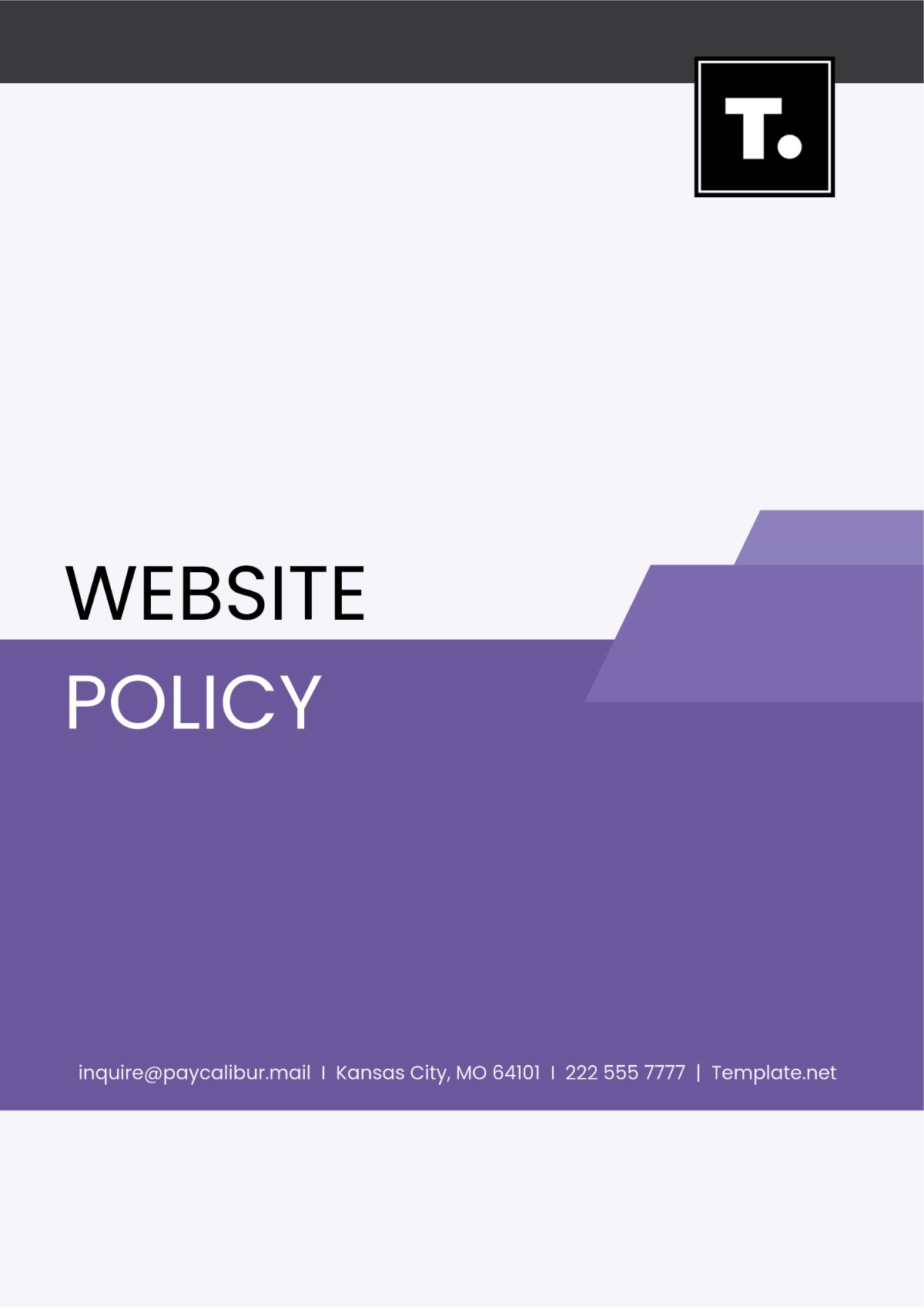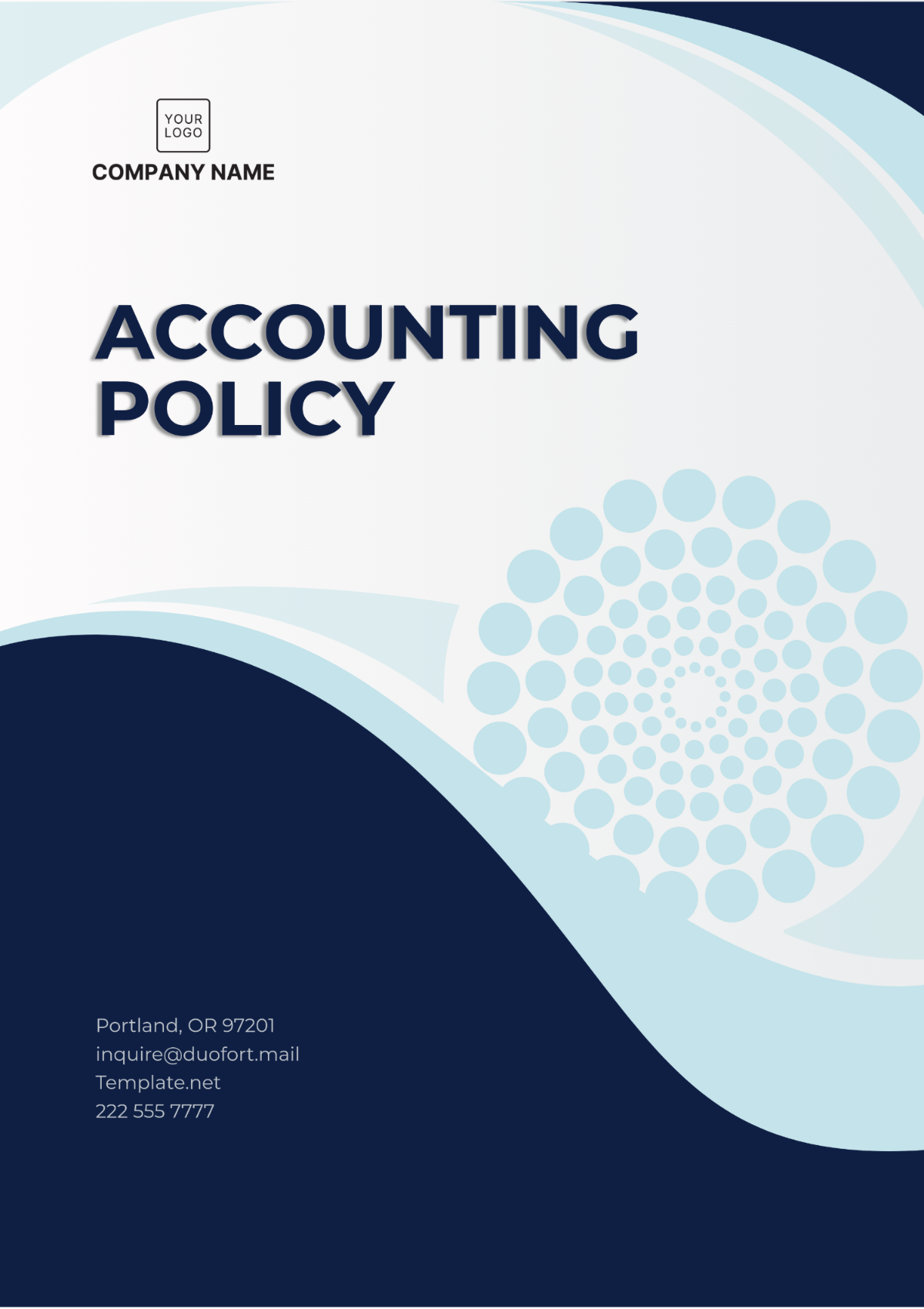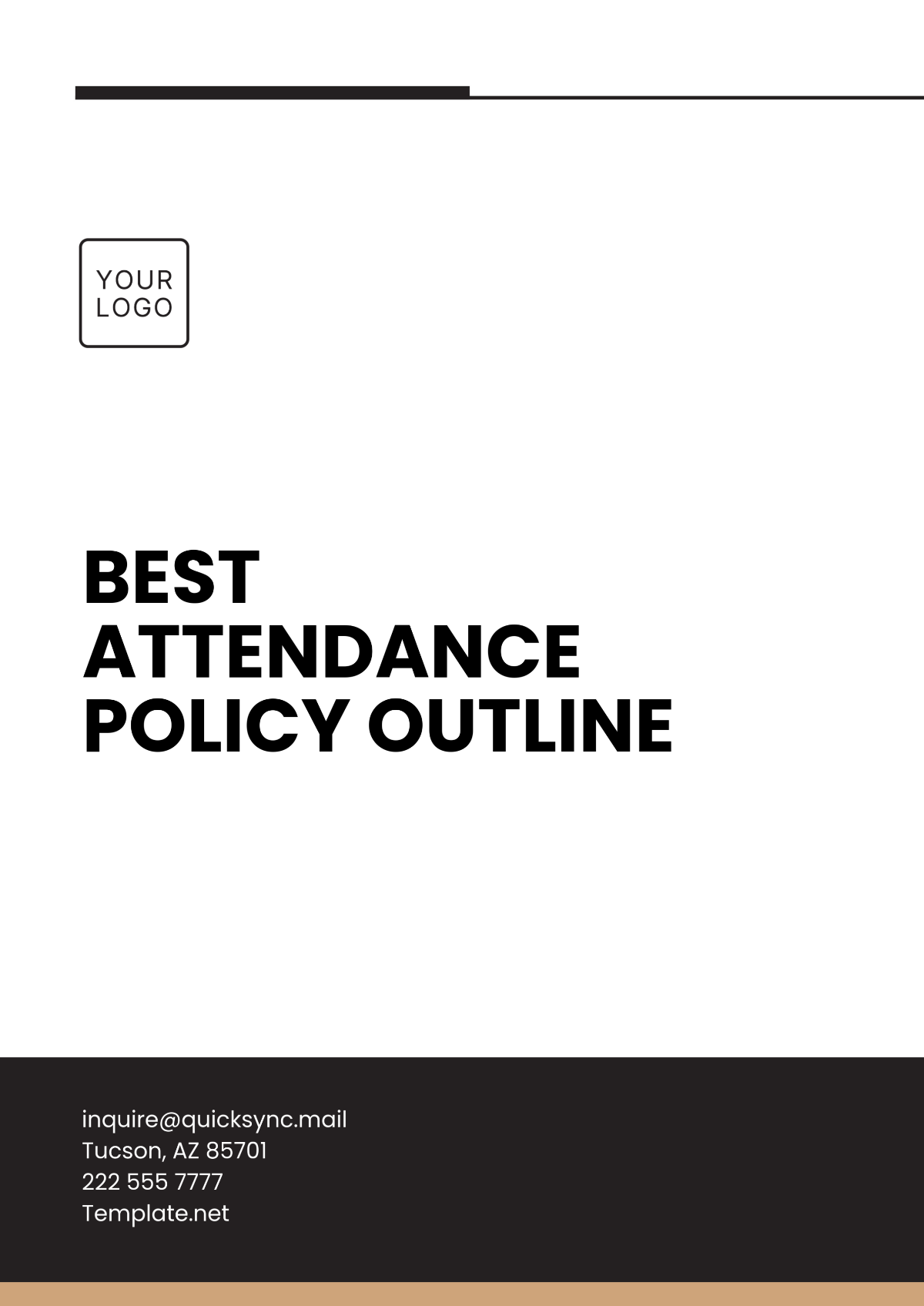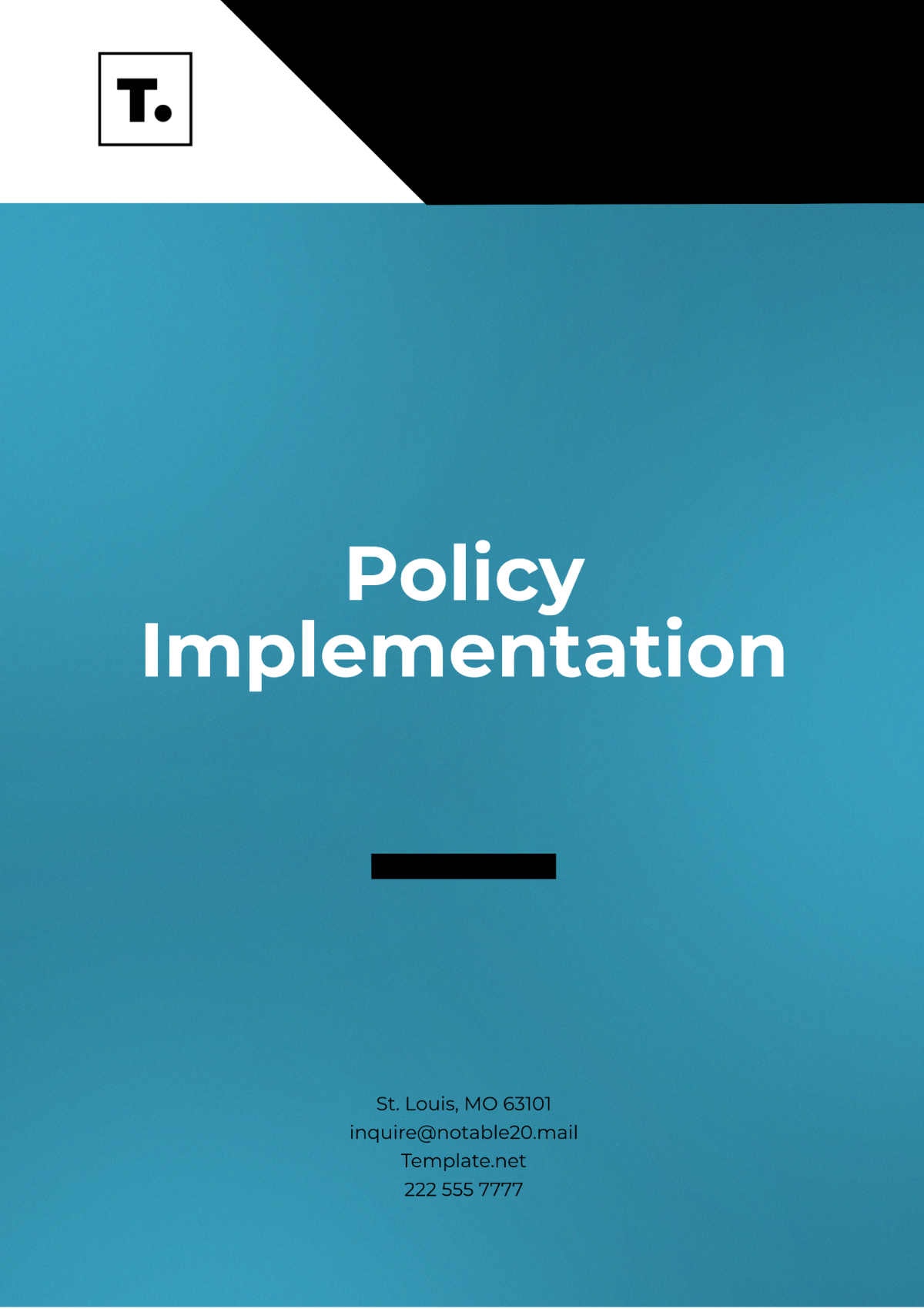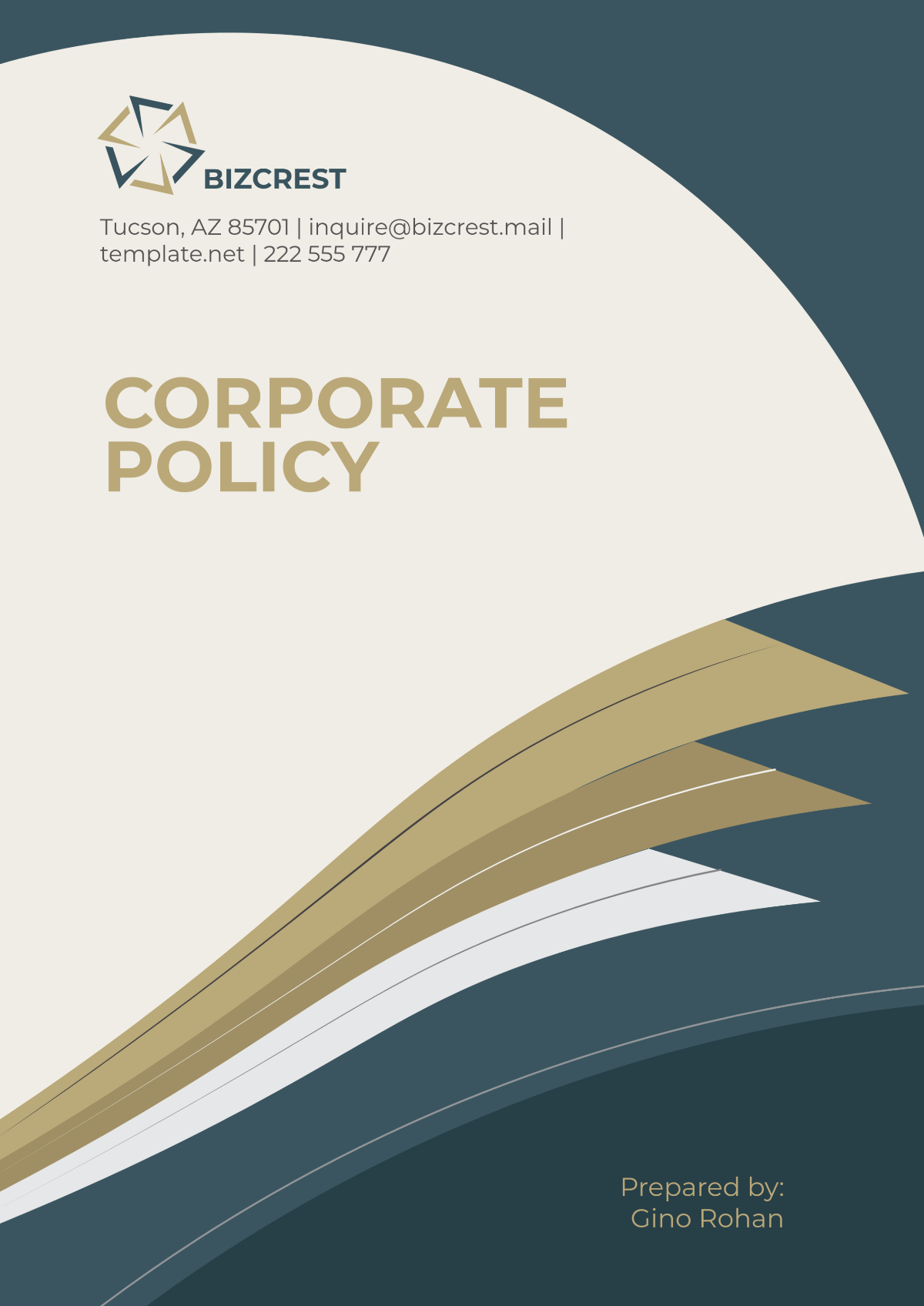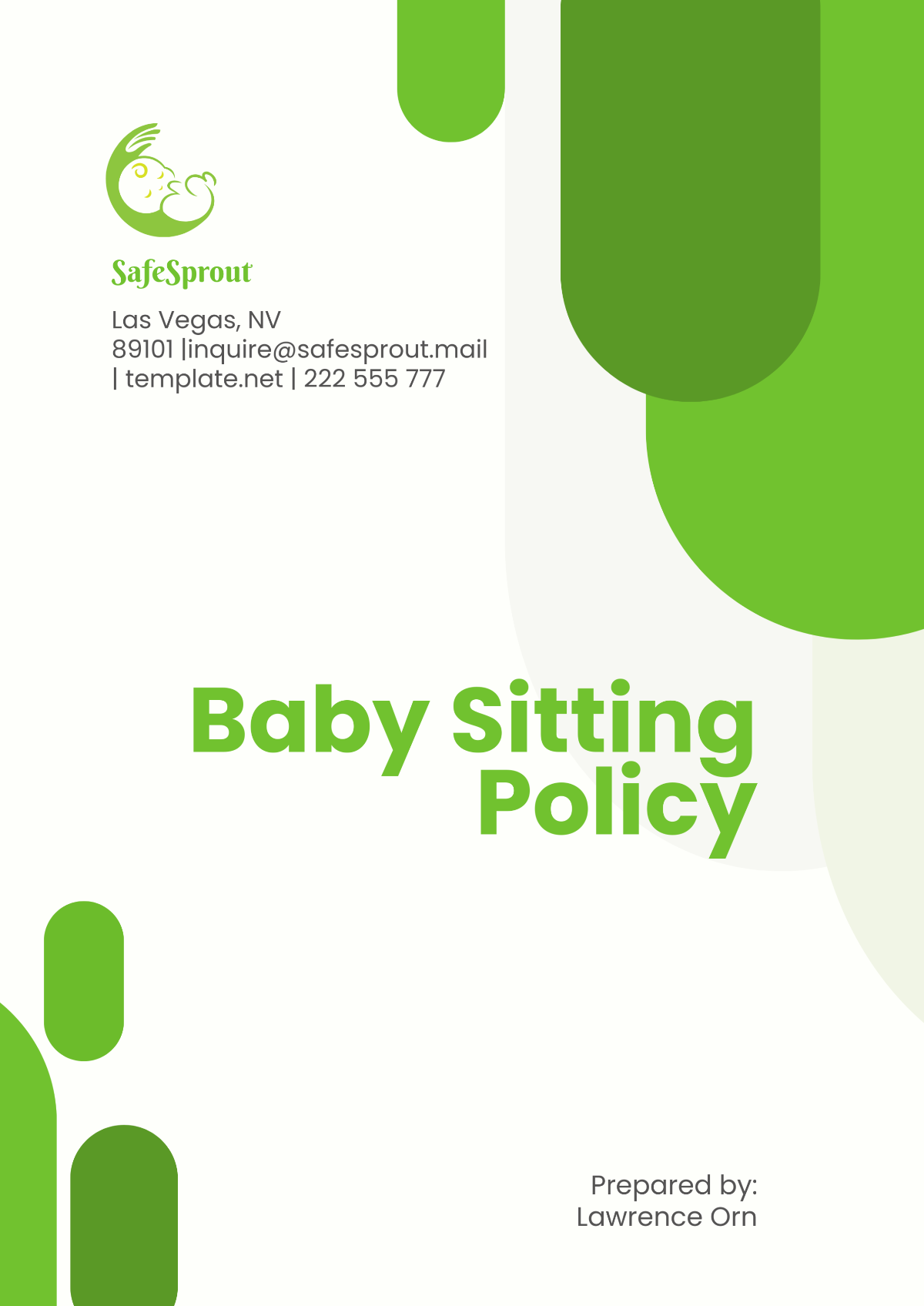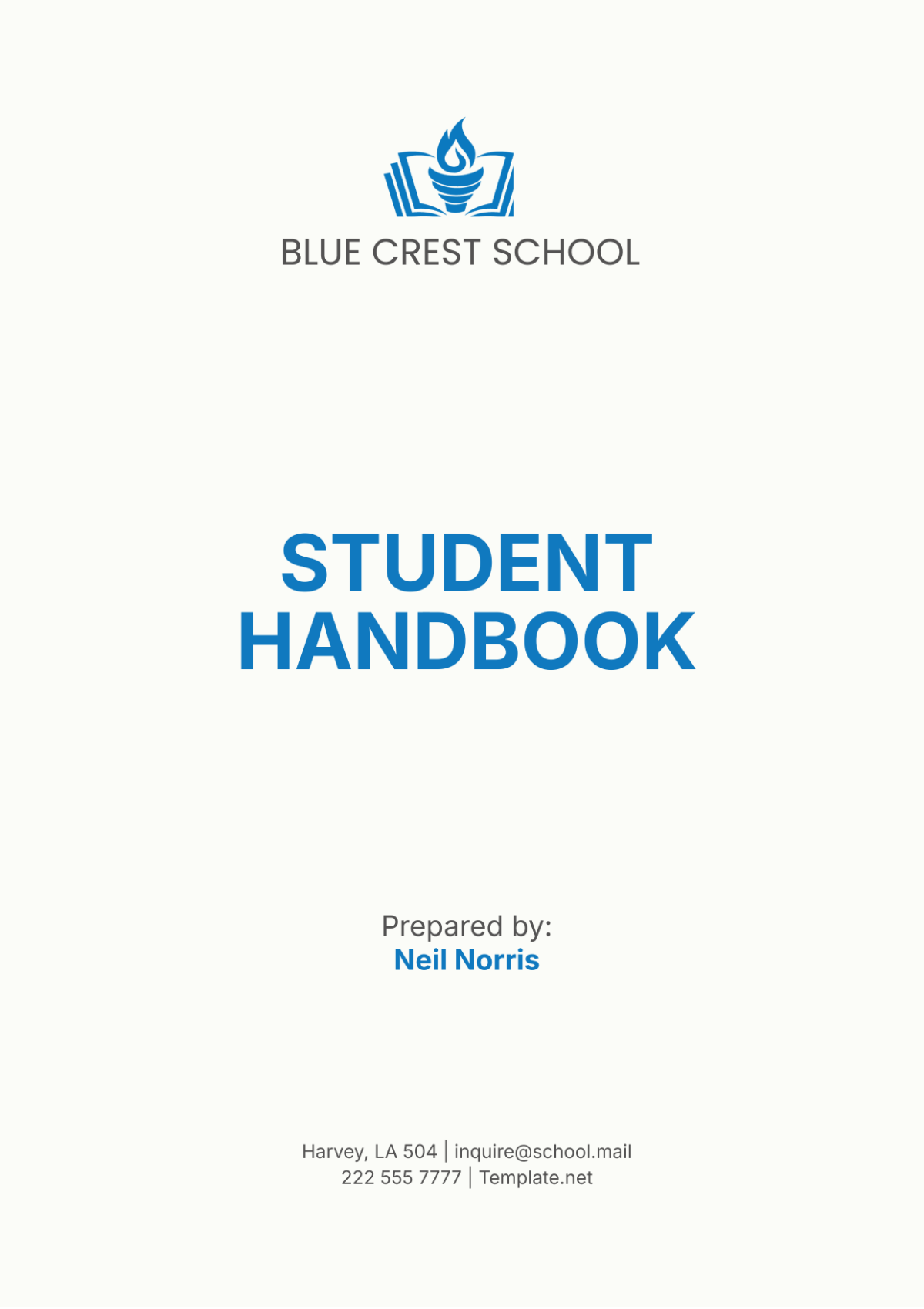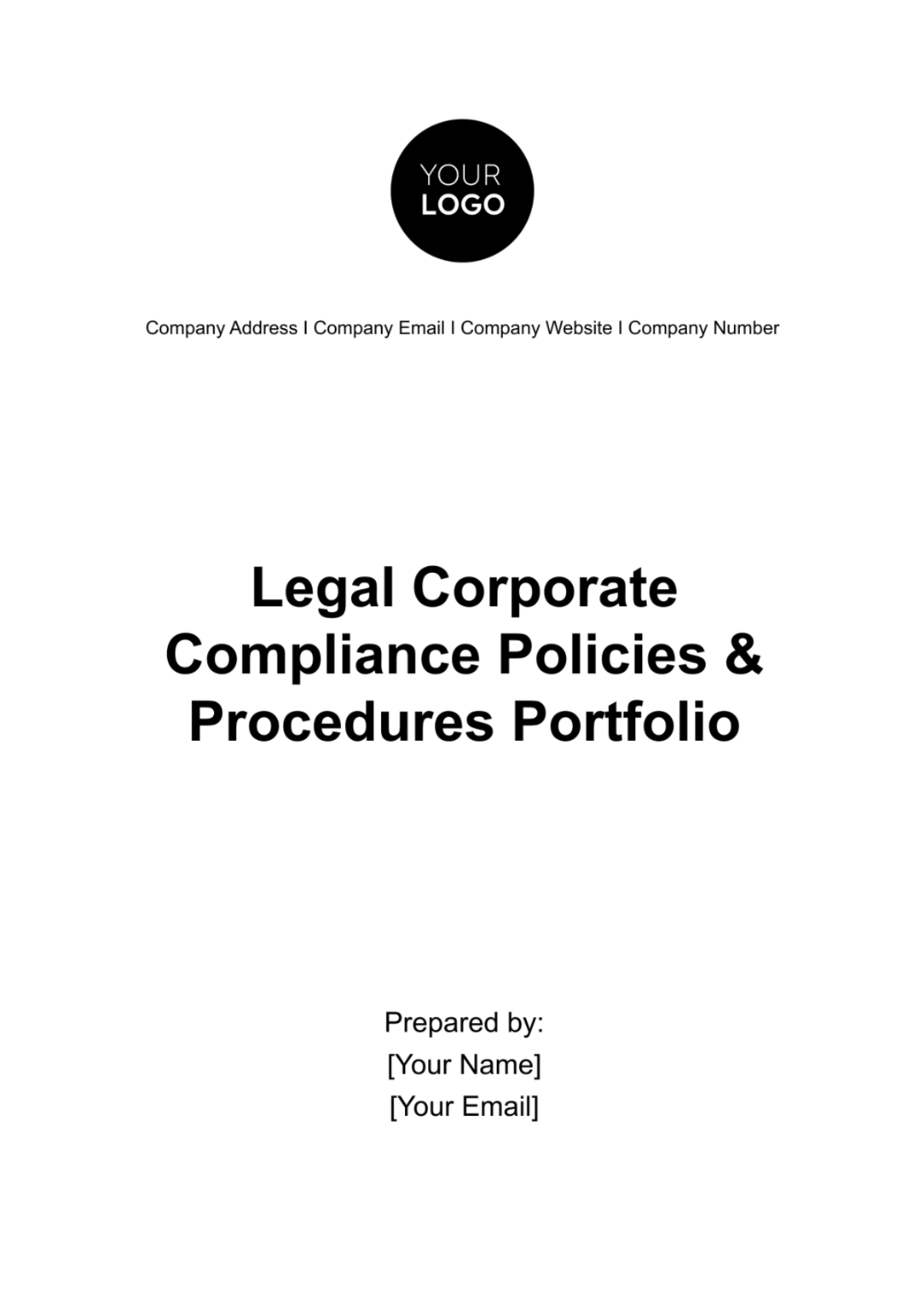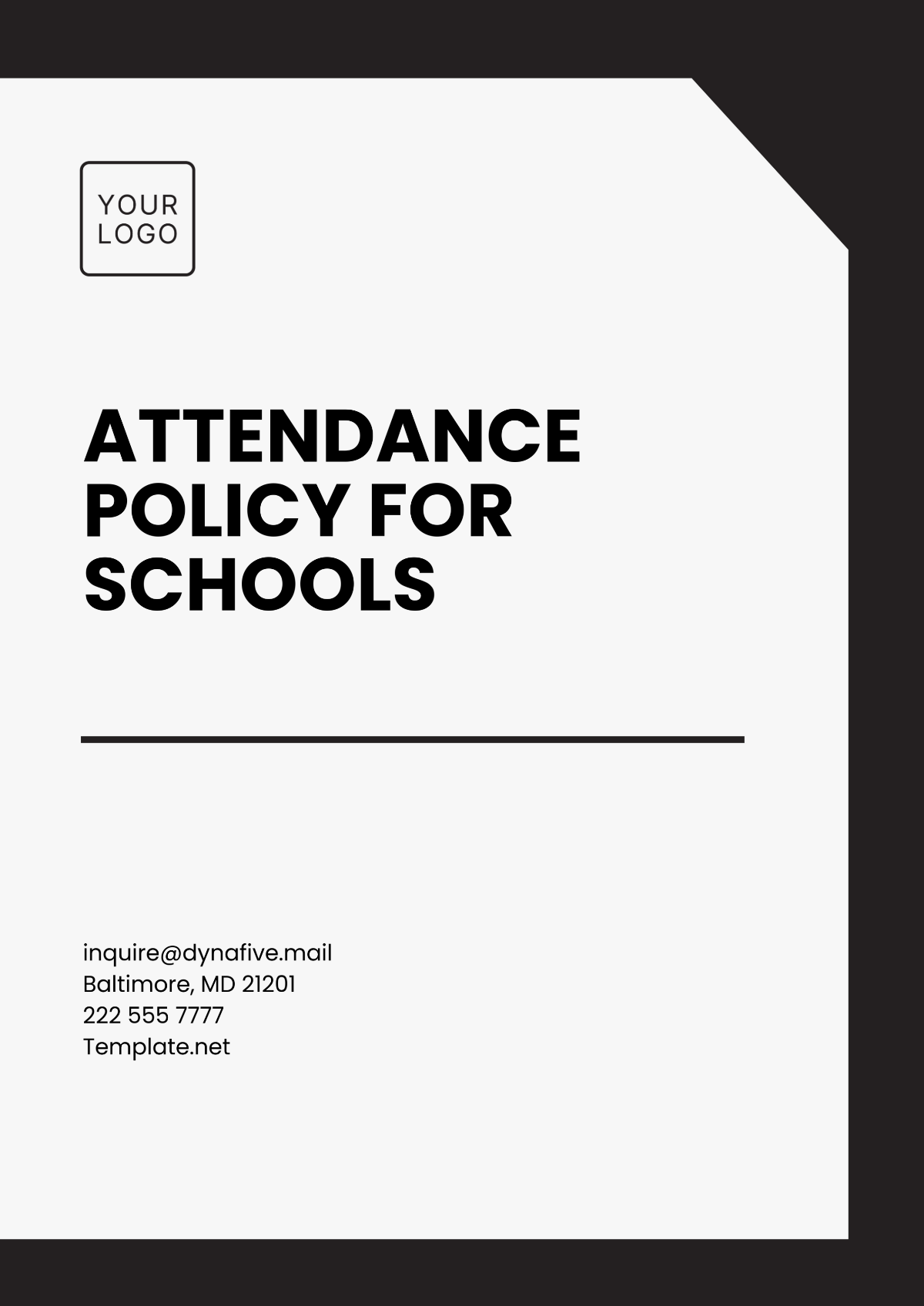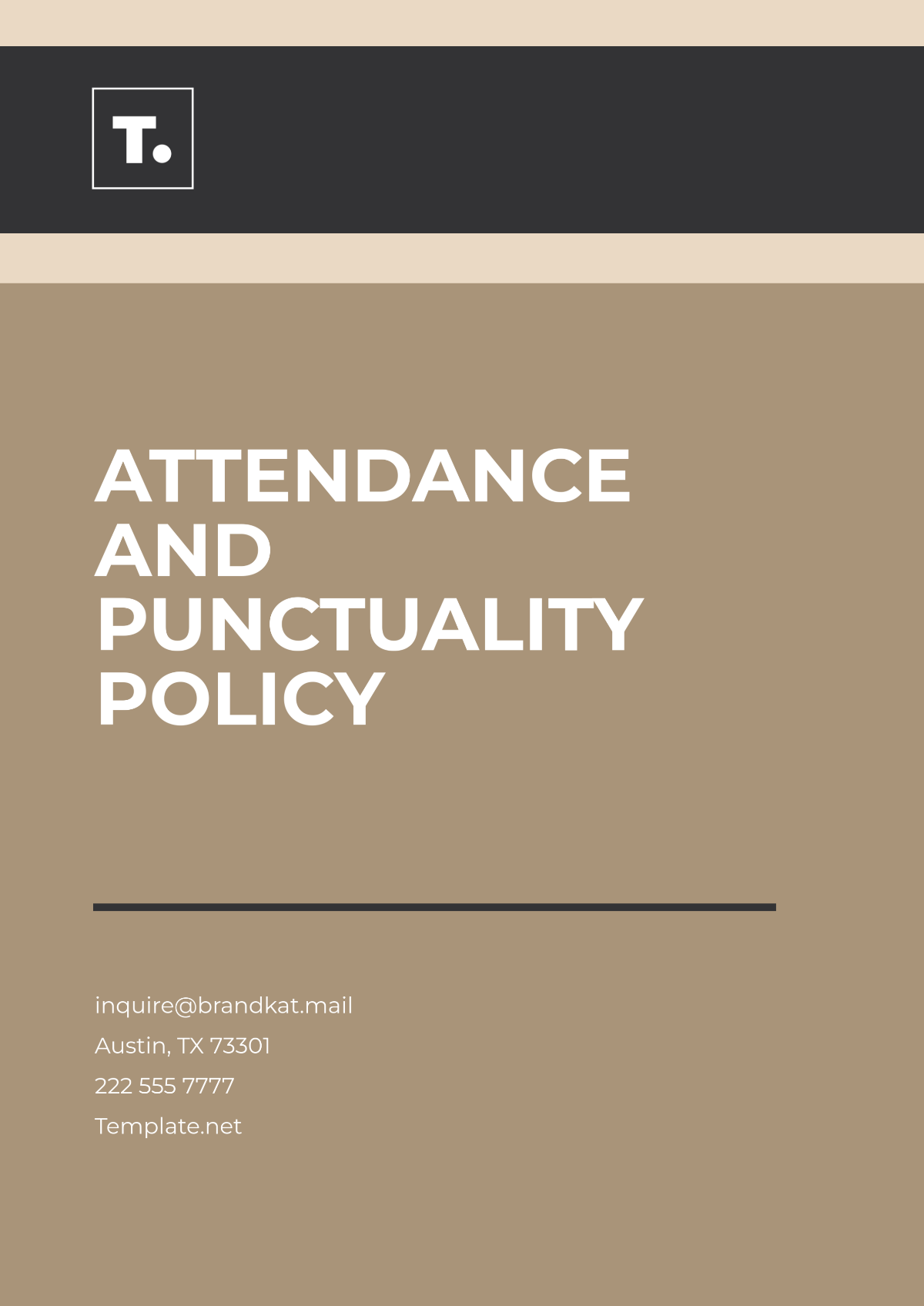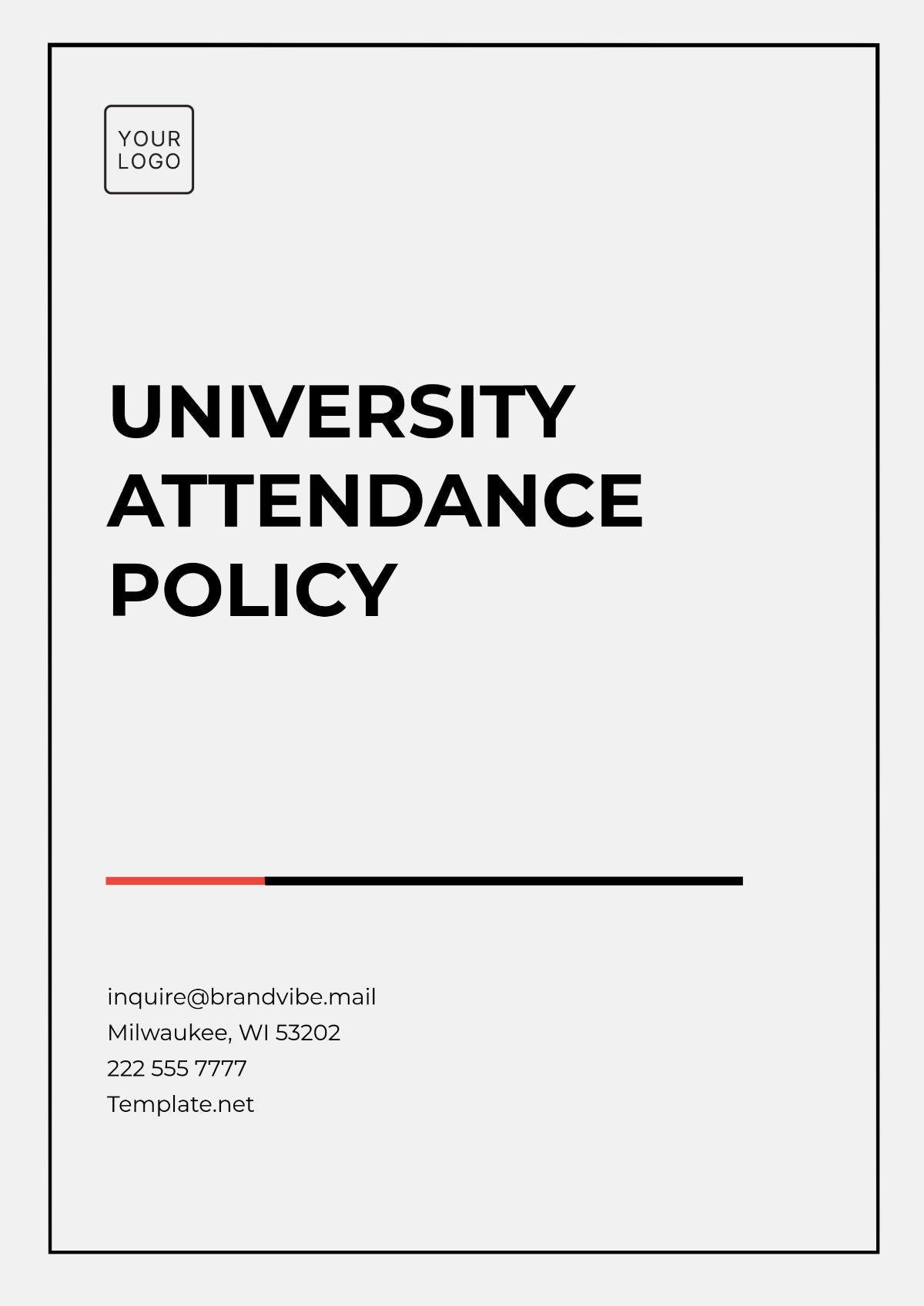Hotel Use/Usage Policy
I. Introduction
A. Purpose
The purpose of this Hotel Use/Usage Policy is to establish clear and concise guidelines for the use of facilities, resources, and services provided by [Your Company Name]. This policy aims to ensure a safe, enjoyable, and respectful environment for all guests and staff members. By adhering to these guidelines, we strive to maintain high standards of service and hospitality. Ensuring compliance with this policy will help protect the hotel's property, reputation, and the well-being of everyone on the premises.
B. Scope
This policy applies to all guests, employees, contractors, and visitors who utilize any part of the hotel premises. It encompasses all areas of the hotel, including but not limited to guest rooms, public areas, dining facilities, and recreational spaces. The guidelines set forth in this policy are designed to cover various aspects of hotel operations, from check-in and check-out procedures to room usage and maintenance. Understanding and following these guidelines is essential for ensuring the smooth operation of the hotel and the satisfaction of all guests.
C. Compliance
Adherence to this policy is mandatory for all individuals on the premises. Non-compliance may result in disciplinary action, including but not limited to eviction, fines, or legal action, depending on the severity of the violation. Regular monitoring and enforcement of this policy are crucial to maintaining a safe and orderly environment. Guests and staff members are encouraged to report any violations or concerns to hotel management promptly. By ensuring compliance, we can create a positive and respectful atmosphere for everyone.
II. Guest Check-In and Check-Out
A. Check-In
The check-in process is crucial to ensuring a smooth and welcoming experience for guests. The following table outlines the steps involved in the check-in procedure:
No. | Step | Description |
|---|---|---|
1 | Arrival | Guest arrives at the hotel and approaches the front desk. |
2 | Documentation | Guest provides identification and reservation details. |
3 | Payment | Guest settles any outstanding payments or deposits. |
4 | Room Key | Front desk staff issues the room key and provides information. |
5 | Escort | Guest is escorted to their room or given directions. |
Arrival: Guests are greeted upon arrival at the hotel and directed to the front desk. This initial interaction sets the tone for the guest's stay and provides an opportunity to offer assistance.
Documentation: Guests must present valid identification and their reservation confirmation. This step ensures that all guest details are accurately recorded in the hotel's system.
Payment: Any outstanding balances or deposits must be cleared before room keys are issued. This guarantees that the hotel secures the necessary payments upfront.
Room Key: The front desk staff provides the guest with a room key and essential information about the hotel's amenities and services. This step ensures guests are well-informed about what the hotel offers.
Escort: Guests are either escorted to their rooms by a staff member or provided with clear directions. This personalized touch enhances the guest's overall experience.
By following these steps, the check-in process becomes efficient and welcoming, helping to establish a positive first impression. Ensuring all necessary information is collected and payments are processed upfront helps prevent potential issues during the guest's stay. The personalized escort or directions add a touch of hospitality, making guests feel valued and cared for right from the start.
B. Check-Out
A smooth check-out process is essential for maintaining guest satisfaction and preparing the room for the next guest. The following table outlines the steps involved in the check-out procedure:
No. | Step | Description |
|---|---|---|
1 | Notification | Guest informs the front desk of their intended departure. |
2 | Room Inspection | Staff inspects the room for any damages or missing items. |
3 | Billing | Guest settles any final charges and returns the room key. |
4 | Feedback | Guest provides feedback or completes a satisfaction survey. |
Notification: Guests notify the front desk of their planned check-out time. This allows the hotel to prepare for room turnover and schedule cleaning.
Room Inspection: Staff members inspect the room to ensure no damage has occurred and that no items are missing. This step is crucial for maintaining room quality and inventory.
Billing: The guest settles any final charges, such as room service or minibar usage, and returns the room key. This final settlement ensures that all financial transactions are complete.
Feedback: Guests are encouraged to provide feedback about their stay, either through a brief conversation or a written survey. This information helps the hotel improve its services.
Efficient check-out procedures help ensure that guests leave with a positive impression of the hotel. Addressing final billing and conducting room inspections promptly facilitates room preparation for the next guest, enhancing overall operational efficiency. Collecting feedback at check-out provides valuable insights for continuous improvement in service quality.
III. Room Usage and Maintenance
A. Room Cleanliness
Maintaining the cleanliness of guest rooms is essential for health, safety, and guest satisfaction. The following guidelines must be observed:
Daily Housekeeping: Rooms are to be cleaned daily unless the guest opts out by using the "Do Not Disturb" sign. Daily housekeeping ensures that rooms remain in optimal condition throughout the guest's stay.
Linen and Towel Changes: Linens and towels should be changed every third day or upon guest request. This practice balances guest comfort with environmental considerations.
Waste Disposal: Trash bins are to be emptied daily, and recyclables separated according to the hotel's recycling policy. Proper waste management helps maintain cleanliness and sustainability.
Reporting Issues: Any maintenance issues, such as plumbing or electrical problems, must be reported immediately to the front desk. Prompt reporting ensures quick resolution and prevents further damage.
B. In-Room Amenities
Guests are provided with various in-room amenities for their convenience and comfort. The following table outlines the standard amenities available in each room:
No. | Amenity | Description |
|---|---|---|
1 | Wi-Fi | Complimentary high-speed internet access. |
2 | Television | Cable or satellite TV with a range of channels. |
3 | Mini-Bar | Stocked with snacks and beverages; replenished daily. |
4 | Safe | Secure safe for storing valuables. |
5 | Coffee Maker | Coffee and tea making facilities, replenished daily. |
Wi-Fi: Complimentary high-speed internet access is available in all rooms. This amenity ensures that guests can stay connected for business or leisure purposes.
Television: Each room is equipped with a television offering a variety of channels. This provides entertainment options for guests during their stay.
Mini-Bar: The mini-bar is stocked with snacks and beverages and is replenished daily. This convenient amenity allows guests to enjoy refreshments without leaving their room.
Safe: A secure safe is provided for guests to store their valuables. This ensures peace of mind for guests concerned about the safety of their belongings.
Coffee Maker: Coffee and tea making facilities are available in each room, with supplies replenished daily. This amenity offers guests the convenience of making hot beverages in their room.
Offering a range of in-room amenities enhances the overall guest experience by providing convenience and comfort. High-speed internet access, a well-stocked mini-bar, and entertainment options such as television help guests feel at home. Secure safes and daily replenished coffee makers add to the sense of security and hospitality, ensuring a pleasant and worry-free stay.
IV. Public Areas and Facilities
A. Lobby and Reception
The lobby and reception areas serve as the hotel's central hubs for guest interaction and service. The following guidelines apply:
Cleanliness: These areas must be kept clean and tidy at all times. Regular cleaning ensures a welcoming environment for guests and visitors.
Seating Arrangement: Furniture should be arranged to facilitate easy movement and provide ample seating. A well-organized seating arrangement enhances comfort and accessibility.
Information Display: Relevant information, such as event schedules and local attractions, should be prominently displayed. This provides guests with useful information during their stay.
Security: Security personnel should be present to ensure the safety and security of guests and staff. Visible security measures help maintain a safe environment.
B. Dining Areas
The dining areas include restaurants, cafes, and bars within the hotel. The following guidelines ensure high standards of service and hygiene:
Sanitation: All dining areas must adhere to strict sanitation standards. Regular cleaning and disinfection prevent the spread of illnesses and maintain a hygienic environment.
Service Efficiency: Staff should be trained to provide efficient and courteous service. Prompt and polite service enhances the dining experience for guests.
Menu Variety: A diverse menu catering to different dietary preferences should be available. Offering a variety of options ensures that all guests can find something to enjoy.
Ambiance: The ambiance should be pleasant and conducive to dining. This includes appropriate lighting, comfortable seating, and suitable decor.
C. Recreational Facilities
Recreational facilities, such as the gym, pool, and spa, provide guests with opportunities for relaxation and exercise. The following guidelines promote safe and enjoyable use of these facilities:
Cleanliness: All recreational areas must be cleaned and sanitized regularly. Maintaining cleanliness ensures a healthy and pleasant environment for guests.
Equipment Maintenance: Recreational equipment should be well-maintained and regularly inspected for safety. Proper maintenance prevents accidents and ensures equipment is always in good working order.
Access Control: Access to certain facilities may be restricted to registered guests or specific hours. Controlling access helps manage the use of facilities and ensures availability for guests.
Staff Supervision: Trained staff should be available to assist guests and ensure safety. Staff supervision provides guidance and helps prevent accidents or misuse of facilities.
V. Safety and Security
A. Emergency Procedures
Ensuring the safety and security of guests and staff is a top priority for [Your Company Name]. The following table outlines key emergency procedures:
No. | Procedure | Description |
|---|---|---|
1 | Fire Evacuation | Steps to evacuate the building safely in case of fire. |
2 | Medical Emergency | Protocol for handling medical emergencies and calling 911. |
3 | Security Threat | Actions to take in case of a security threat or lockdown. |
4 | Natural Disasters | Guidelines for sheltering in place or evacuating during disasters. |
Fire Evacuation: Guests and staff must follow the designated evacuation routes and assemble at the assigned meeting points. Clear instructions and regular fire drills ensure everyone knows what to do in case of a fire.
Medical Emergency: In case of a medical emergency, staff should provide first aid and call emergency services immediately. Having trained first aid personnel on site is essential for a quick response.
Security Threat: If there is a security threat, staff should follow lockdown procedures and ensure the safety of guests. This includes securing all entrances and communicating with emergency responders.
Natural Disasters: During natural disasters, guests and staff should follow guidelines for sheltering in place or evacuating. Clear communication and preparedness plans help manage these situations effectively.
B. Fire Safety
Fire safety is a critical aspect of hotel operations. The following guidelines help prevent and respond to fire incidents:
Fire Extinguishers: Fire extinguishers should be available and easily accessible in all areas. Regular inspections and maintenance ensure they are in working order.
Smoke Detectors: Smoke detectors must be installed in all areas and regularly tested. Early detection of smoke or fire can prevent a minor incident from becoming a major disaster.
Fire Exits: Fire exits should be clearly marked and free from obstructions. Unobstructed exits ensure that everyone can evacuate quickly and safely.
Training: Staff should be trained in fire safety procedures and the use of fire-fighting equipment. Proper training ensures that staff can respond effectively in an emergency.
VI. Guest Conduct
A. Respect for Property
Guests are expected to respect the hotel's property and facilities. The following guidelines outline the standards for guest conduct:
Damage and Theft: Guests are responsible for any damage to the hotel's property or theft of items. Charges may be applied for any damage or missing items.
Noise Levels: Guests should keep noise levels to a minimum, especially during nighttime hours. Excessive noise can disturb other guests and is considered disrespectful.
Public Areas: Public areas should be used appropriately and kept clean. Guests are encouraged to dispose of trash properly and respect communal spaces.
Smoking Policy: Smoking is prohibited in non-designated areas. Violation of the smoking policy may result in fines or additional cleaning charges.
B. Interaction with Staff
Positive interactions between guests and staff contribute to a pleasant atmosphere. The following guidelines promote respectful and courteous behavior
:
Politeness: Guests should treat staff with politeness and respect. Courteous interactions create a positive environment for everyone.
Feedback: Guests are encouraged to provide constructive feedback to staff. Feedback helps improve services and address any issues promptly.
Complaints: Any complaints should be directed to the front desk or management. This ensures that concerns are addressed professionally and efficiently.
Tipping: Tipping is appreciated but not mandatory. Guests may tip staff for exceptional service as a gesture of appreciation.
VII. Privacy and Confidentiality
A. Guest Privacy
Maintaining guest privacy is a top priority. The following guidelines ensure that guest information and privacy are protected:
Confidentiality: All guest information must be kept confidential and secure. Staff should not disclose guest details to unauthorized individuals.
Room Access: Only authorized personnel are allowed access to guest rooms. Unauthorized entry is strictly prohibited to ensure guest privacy.
Data Protection: Personal data collected from guests must be stored securely. This includes reservation details, payment information, and personal preferences.
Communication: Staff should communicate with guests in a discreet manner. Sensitive information should not be discussed openly in public areas.
B. Security Measures
Implementing security measures is essential for protecting guest information and ensuring a safe environment:
Surveillance: Surveillance cameras should be installed in public areas for security purposes. This helps monitor activities and deter criminal behavior.
Access Control: Access to sensitive areas should be restricted to authorized personnel only. This prevents unauthorized access to confidential information and equipment.
Incident Reporting: Any security incidents must be reported immediately to management. Prompt reporting ensures that issues are addressed quickly and effectively.
Training: Staff should receive regular training on privacy and security protocols. Ongoing training ensures that staff are aware of best practices and any updates to policies.
VIII. Environmental Sustainability
A. Energy Conservation
[Your Company Name] is committed to reducing its environmental footprint. The following guidelines promote energy conservation:
Lighting: Energy-efficient lighting should be used throughout the hotel. This includes LED bulbs and motion sensors to reduce unnecessary energy consumption.
HVAC Systems: Heating, ventilation, and air conditioning systems should be regularly maintained for optimal efficiency. Proper maintenance reduces energy usage and extends equipment life.
Guest Participation: Guests are encouraged to participate in energy-saving initiatives, such as reusing towels and turning off lights when not in use. This collective effort helps reduce the hotel's energy consumption.
Renewable Energy: Where possible, the hotel should invest in renewable energy sources, such as solar panels. Utilizing renewable energy reduces the hotel's reliance on fossil fuels.
B. Waste Management
Effective waste management practices help minimize the hotel's environmental impact. The following guidelines outline best practices:
Recycling: Recycling bins should be provided in guest rooms and public areas. Clear signage helps guests understand what materials can be recycled.
Composting: Organic waste from dining areas should be composted where possible. Composting reduces landfill waste and produces valuable compost for landscaping.
Reduce and Reuse: Efforts should be made to reduce waste by reusing materials. This includes using refillable dispensers for toiletries and encouraging guests to use reusable water bottles.
Hazardous Waste: Hazardous waste, such as batteries and electronic devices, should be disposed of properly. Special disposal procedures help prevent environmental contamination.
IX. Review and Update
A. Policy Review
Regular review of the policy ensures that it remains relevant and effective. The following guidelines outline the review process:
Scheduled Reviews: The policy should be reviewed annually to assess its effectiveness and relevance. Regular reviews ensure that the policy adapts to any changes in hotel operations or industry standards.
Stakeholder Feedback: Feedback from guests, staff, and other stakeholders should be collected and considered during the review process. Incorporating diverse perspectives helps identify areas for improvement and ensures the policy meets the needs of all parties.
Compliance Audit: An audit should be conducted to ensure compliance with the policy. This includes checking that procedures are being followed and identifying any areas of non-compliance.
Benchmarking: The policy should be compared with industry standards and best practices. Benchmarking helps identify gaps and opportunities for enhancing the policy.
B. Policy Update
Updating the policy is necessary to reflect changes in operations, regulations, and best practices. The following guidelines outline the update process:
Change Management: Any changes to the policy should be managed systematically to minimize disruption. This includes clear communication and training for staff to understand and implement the new guidelines.
Approval Process: Policy updates should be reviewed and approved by senior management. This ensures that updates align with the hotel's strategic goals and regulatory requirements.
Documentation: All changes should be documented, and updated versions of the policy should be distributed to relevant parties. Proper documentation ensures that everyone has access to the most current policy.
Communication: Updated policies should be communicated to all stakeholders, including guests and staff. Effective communication helps ensure that everyone is aware of and understands the new guidelines.
C. Implementation
Effective implementation of the policy requires coordination and commitment from all staff members. The following guidelines facilitate successful implementation:
Training: Staff should receive regular training on the policy and any updates. Continuous training ensures that staff are knowledgeable and can adhere to the guidelines.
Monitoring: Regular monitoring and evaluation of policy implementation are necessary to ensure compliance. This includes observing practices, gathering feedback, and making adjustments as needed.
Support Systems: Providing resources and support systems, such as access to policy documents and assistance from supervisors, helps staff comply with the policy. Support systems facilitate adherence and address any challenges that may arise.
Continuous Improvement: The policy should be part of a continuous improvement process, with regular assessments and updates based on feedback and performance. This approach ensures the policy remains effective and relevant.
D. Communication Plan
A clear communication plan is essential for ensuring that all stakeholders are informed about the policy and its updates. The following guidelines outline the communication process:
Internal Communication: Regular internal communications, such as meetings and emails, should be used to inform staff about policy updates and training sessions. Ensuring that staff are well-informed facilitates compliance and implementation.
Guest Communication: Important aspects of the policy should be communicated to guests through various channels, such as the hotel website, in-room information, and signage in public areas. Clear communication helps guests understand their responsibilities and the hotel's expectations.
Feedback Mechanisms: Establishing feedback mechanisms allows guests and staff to share their experiences and suggestions regarding the policy. Collecting and acting on feedback helps improve the policy and its implementation.
Documentation and Access: Providing easy access to the policy document, both in print and online, ensures that all stakeholders can reference the guidelines as needed. Accessible documentation supports transparency and compliance.
